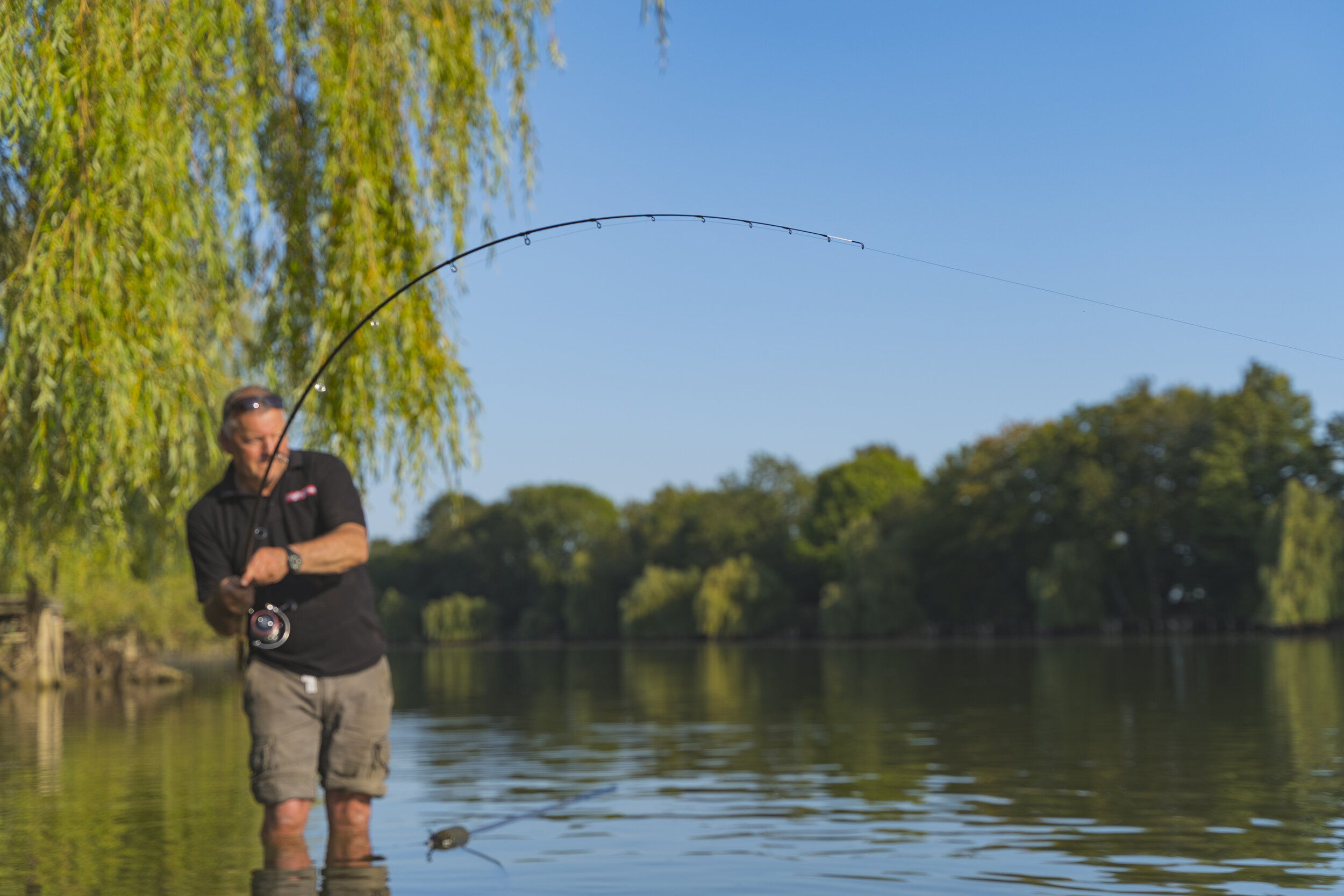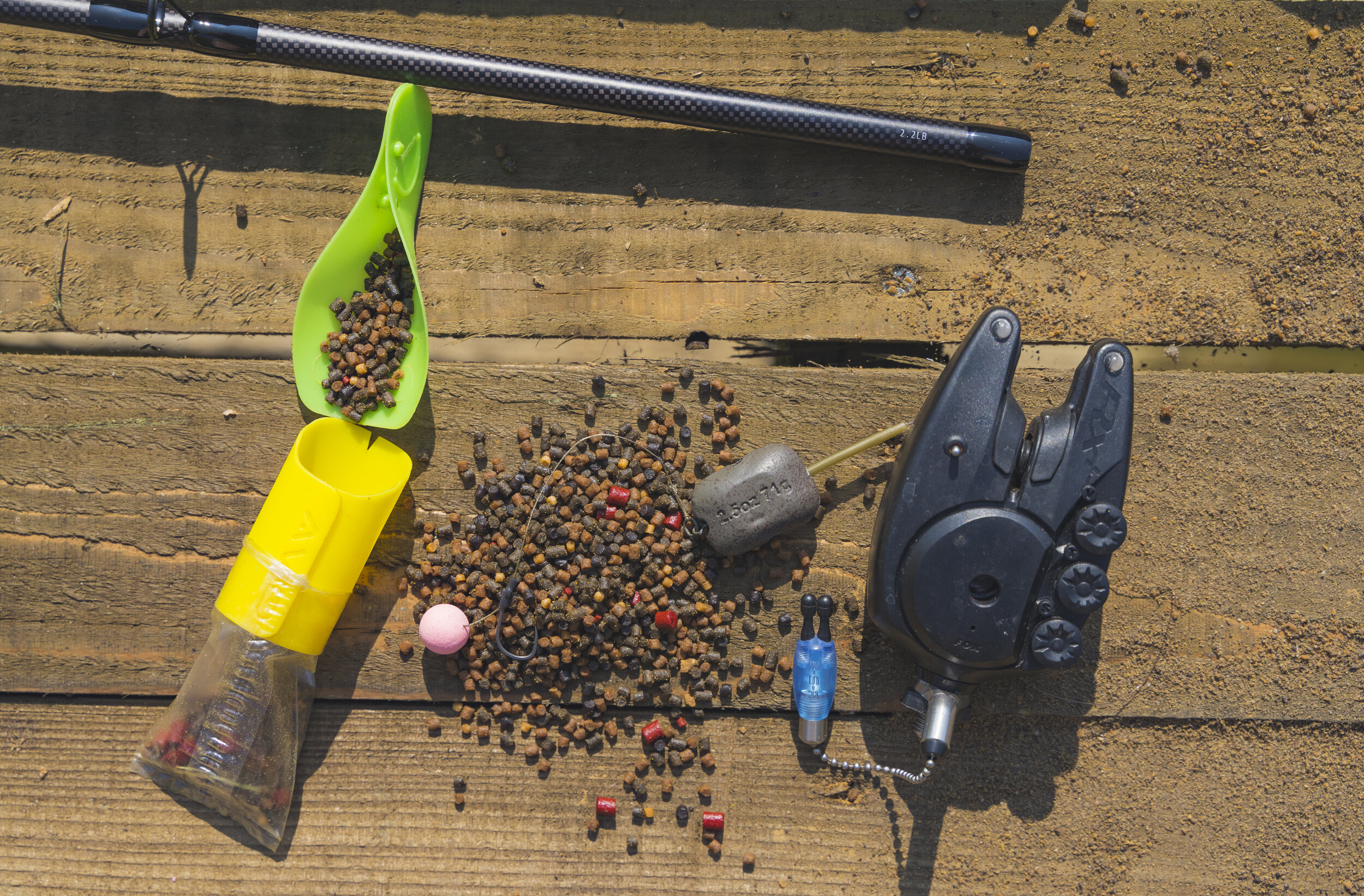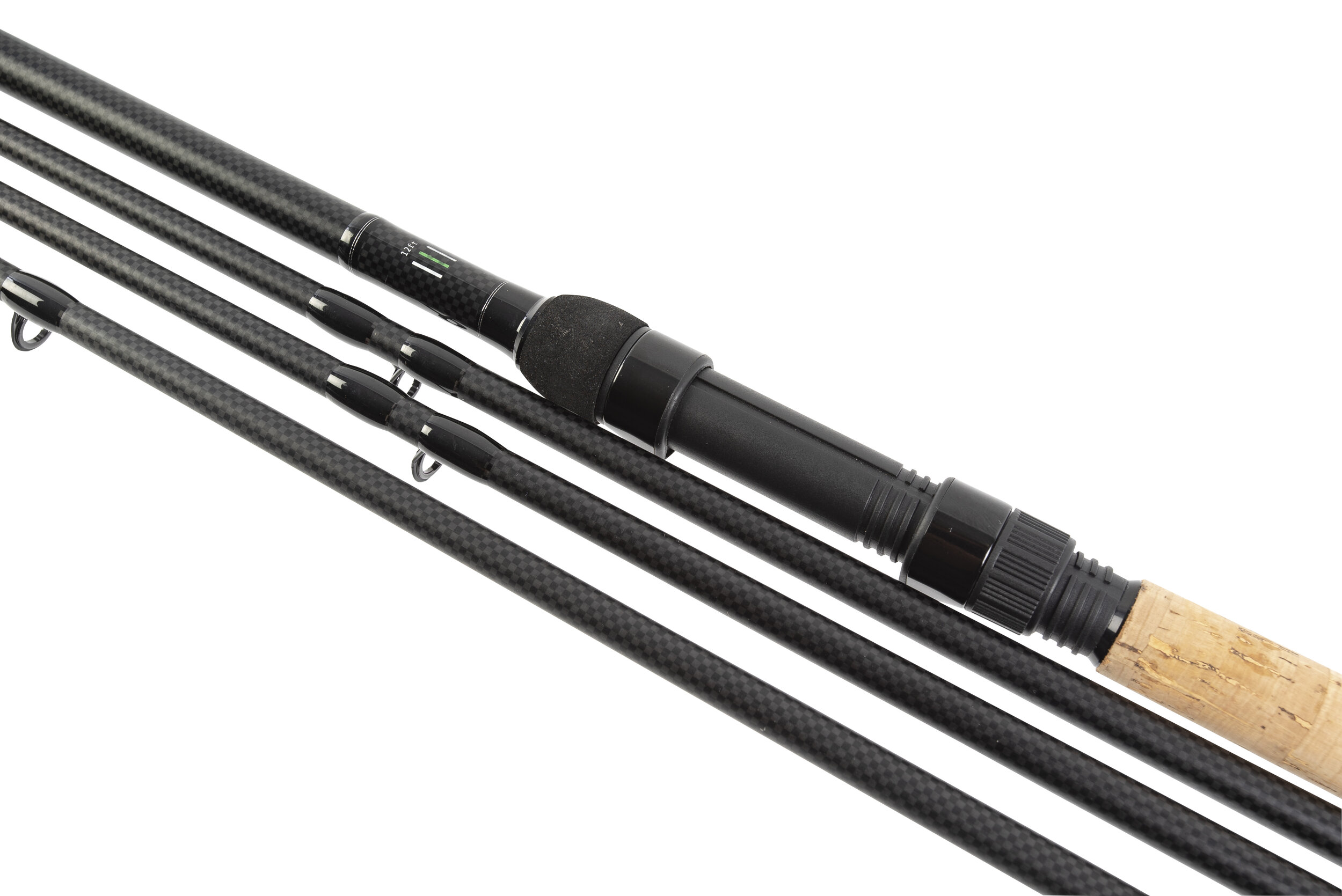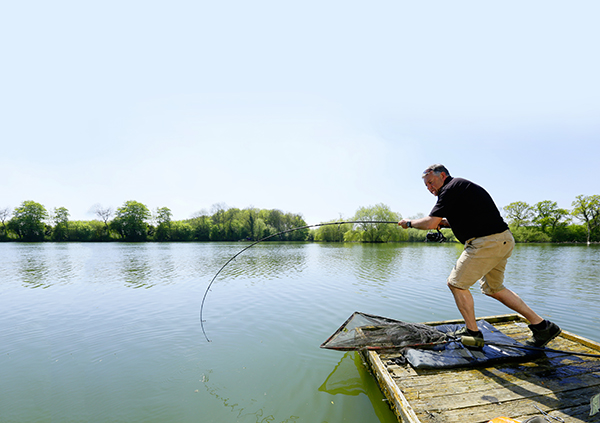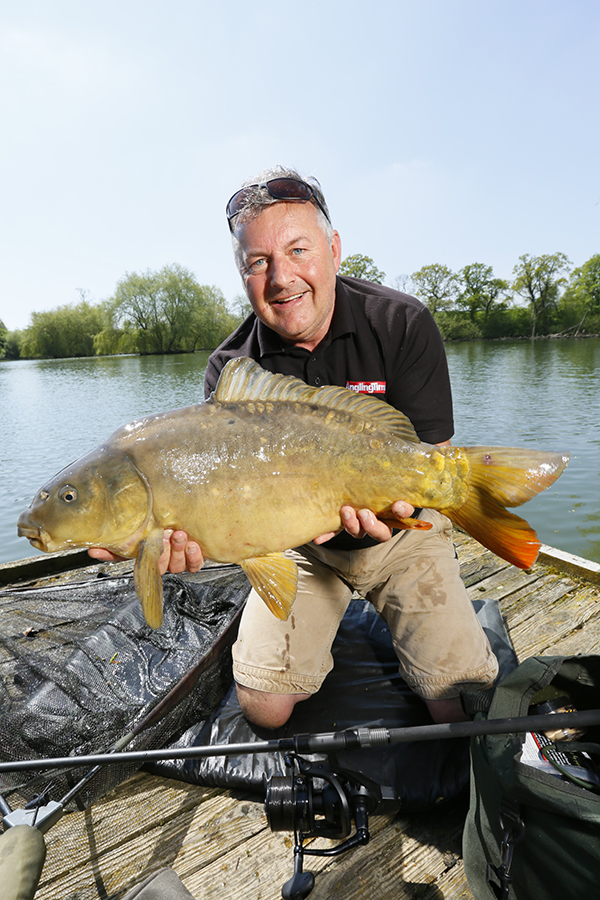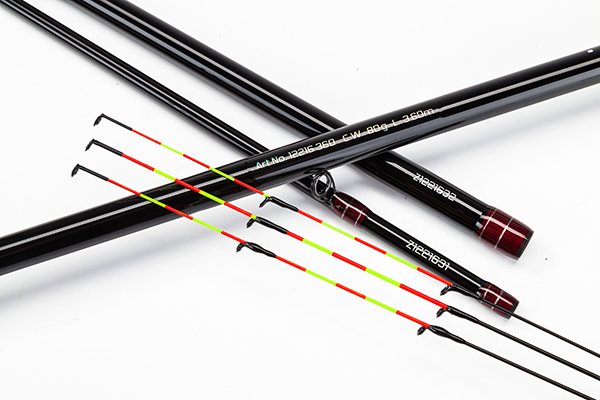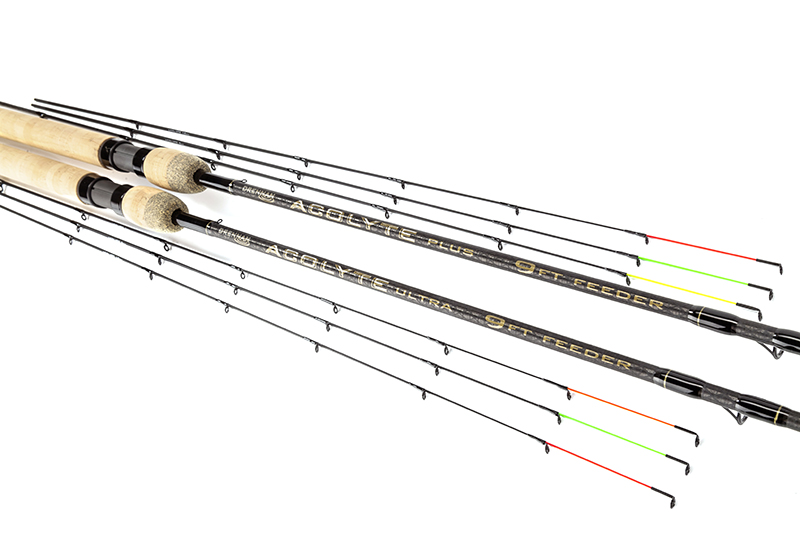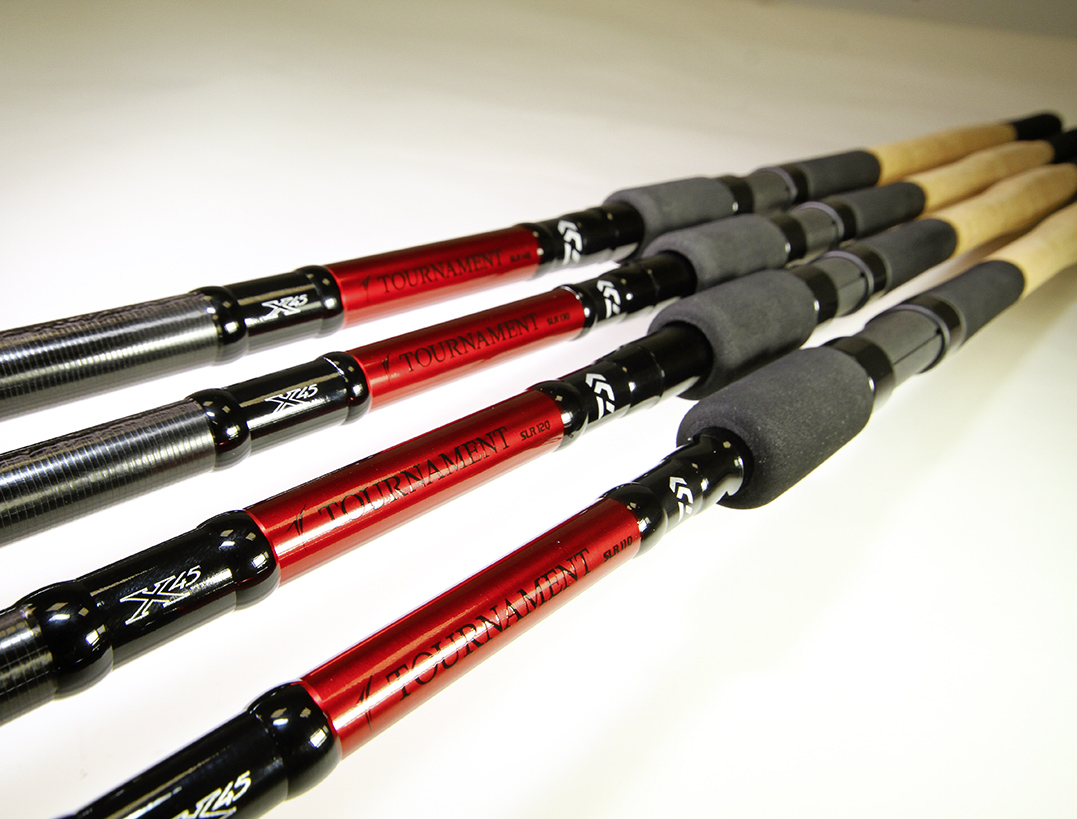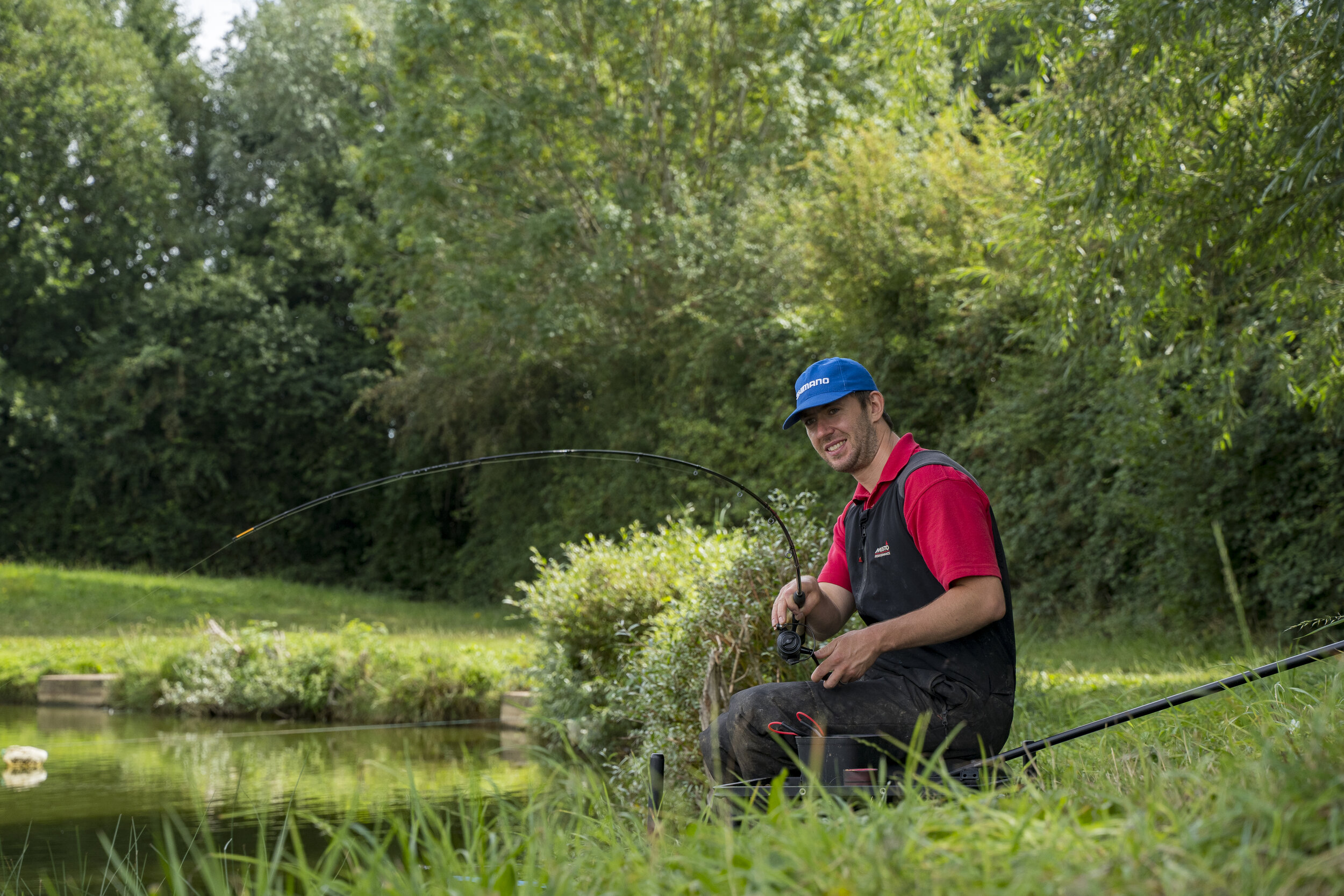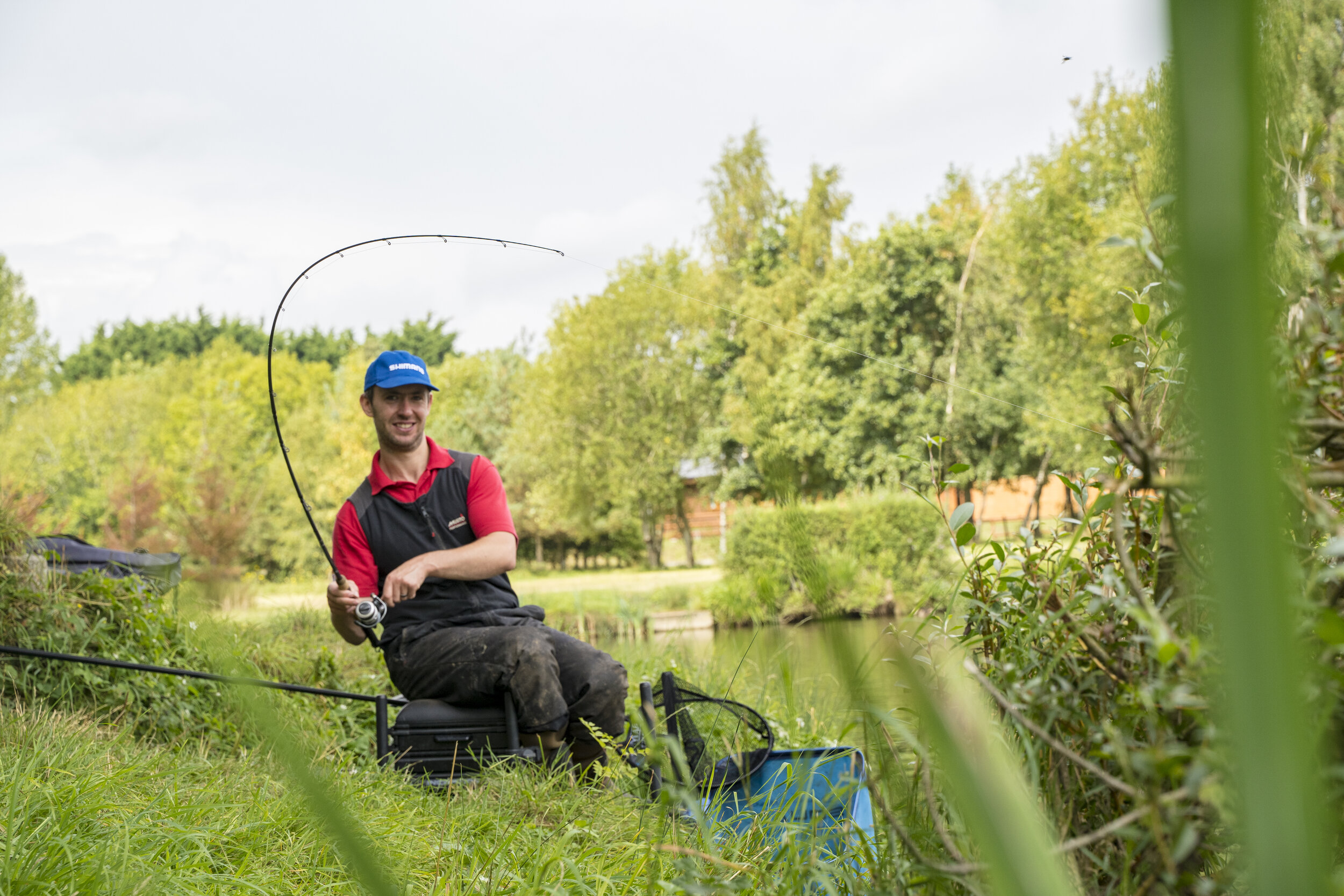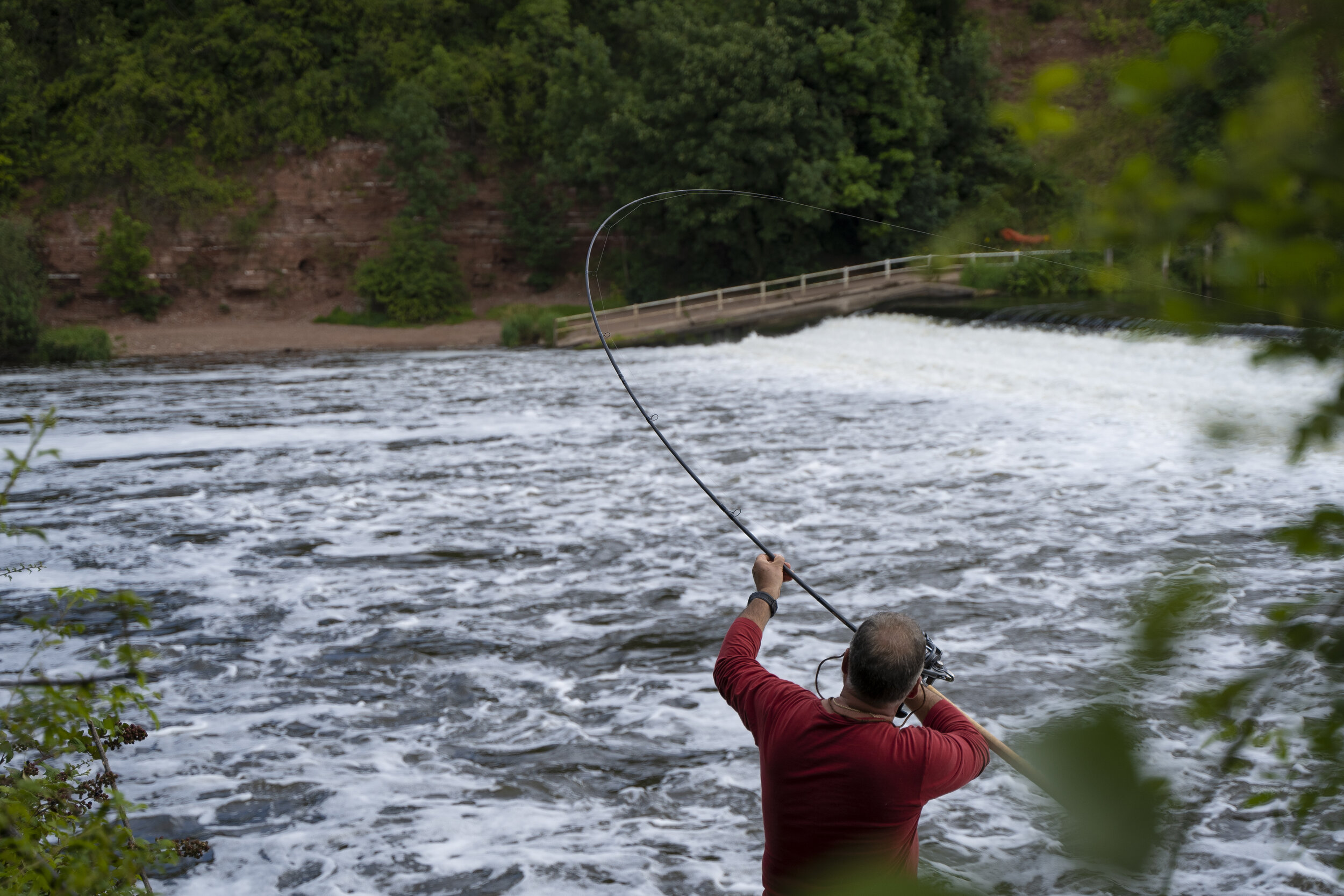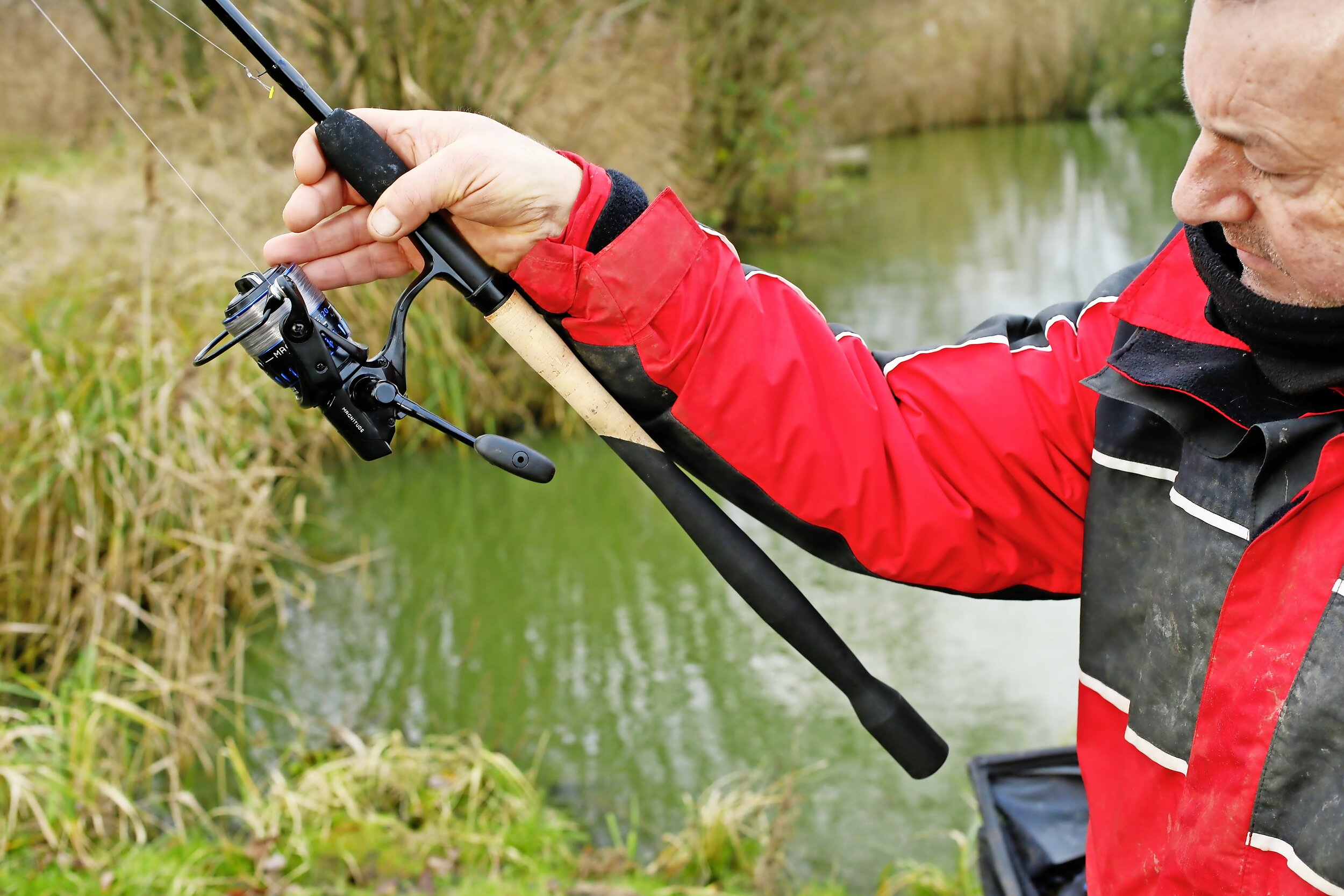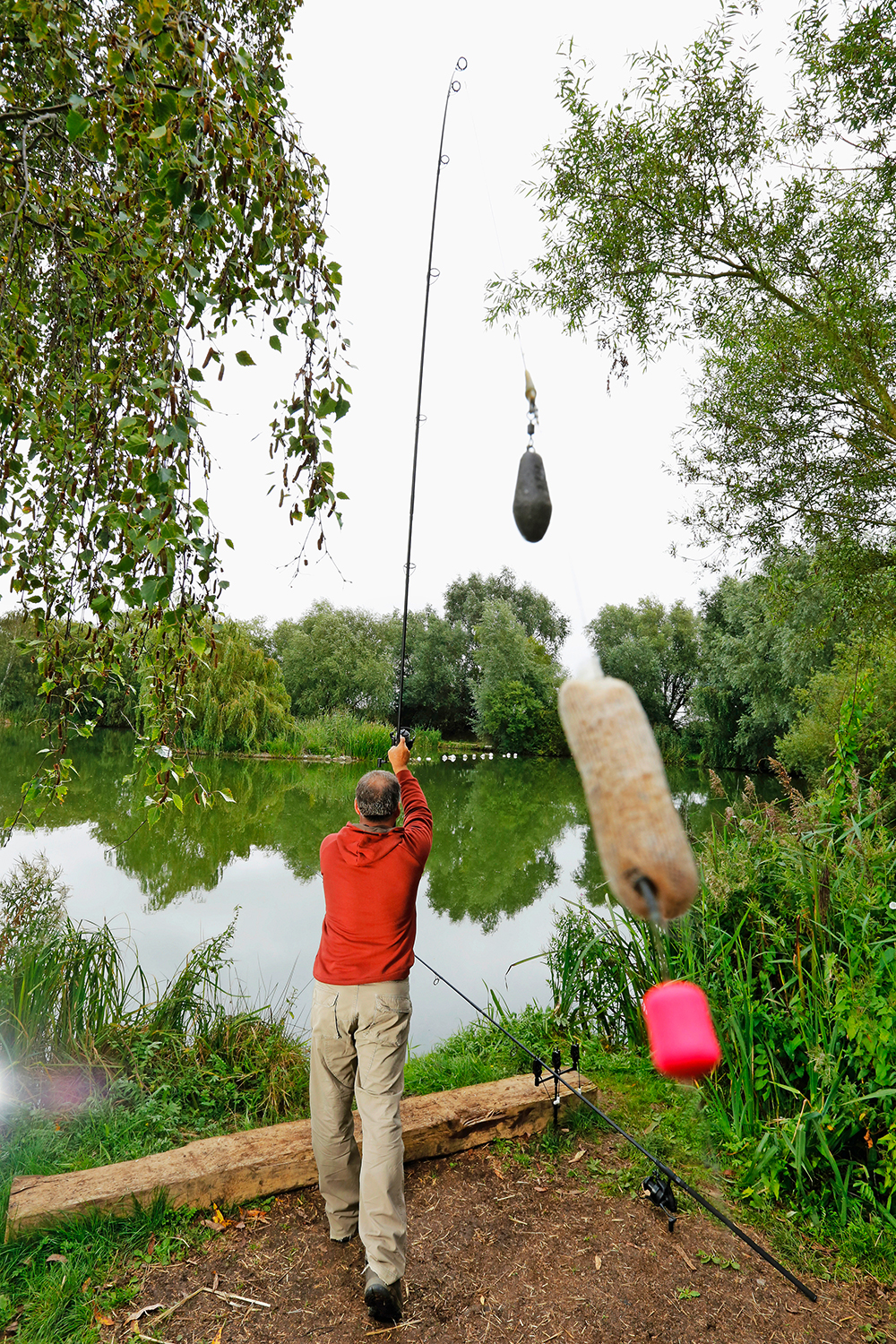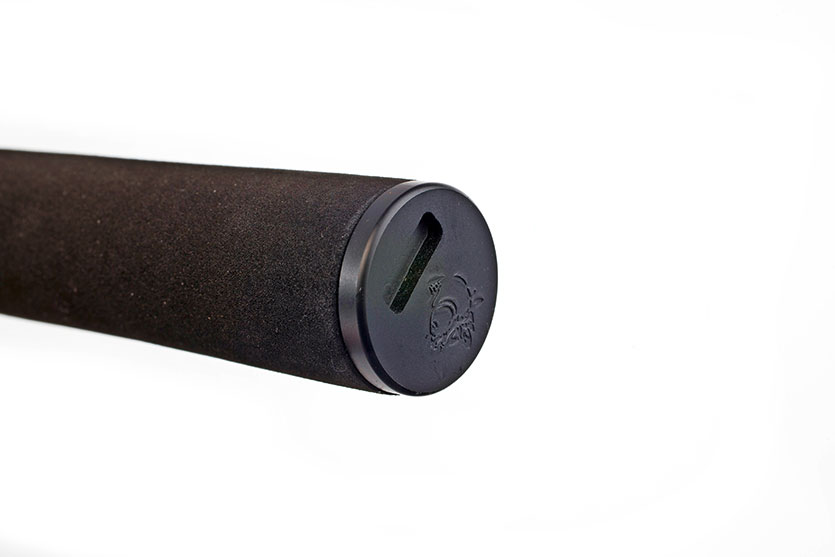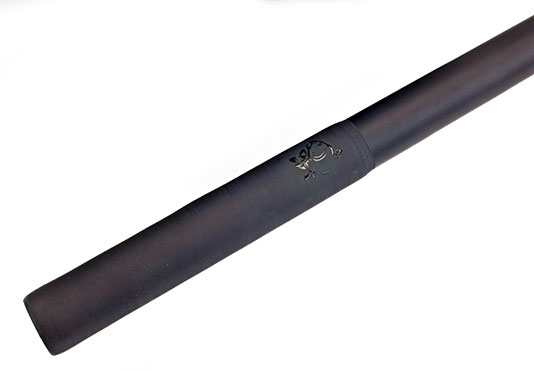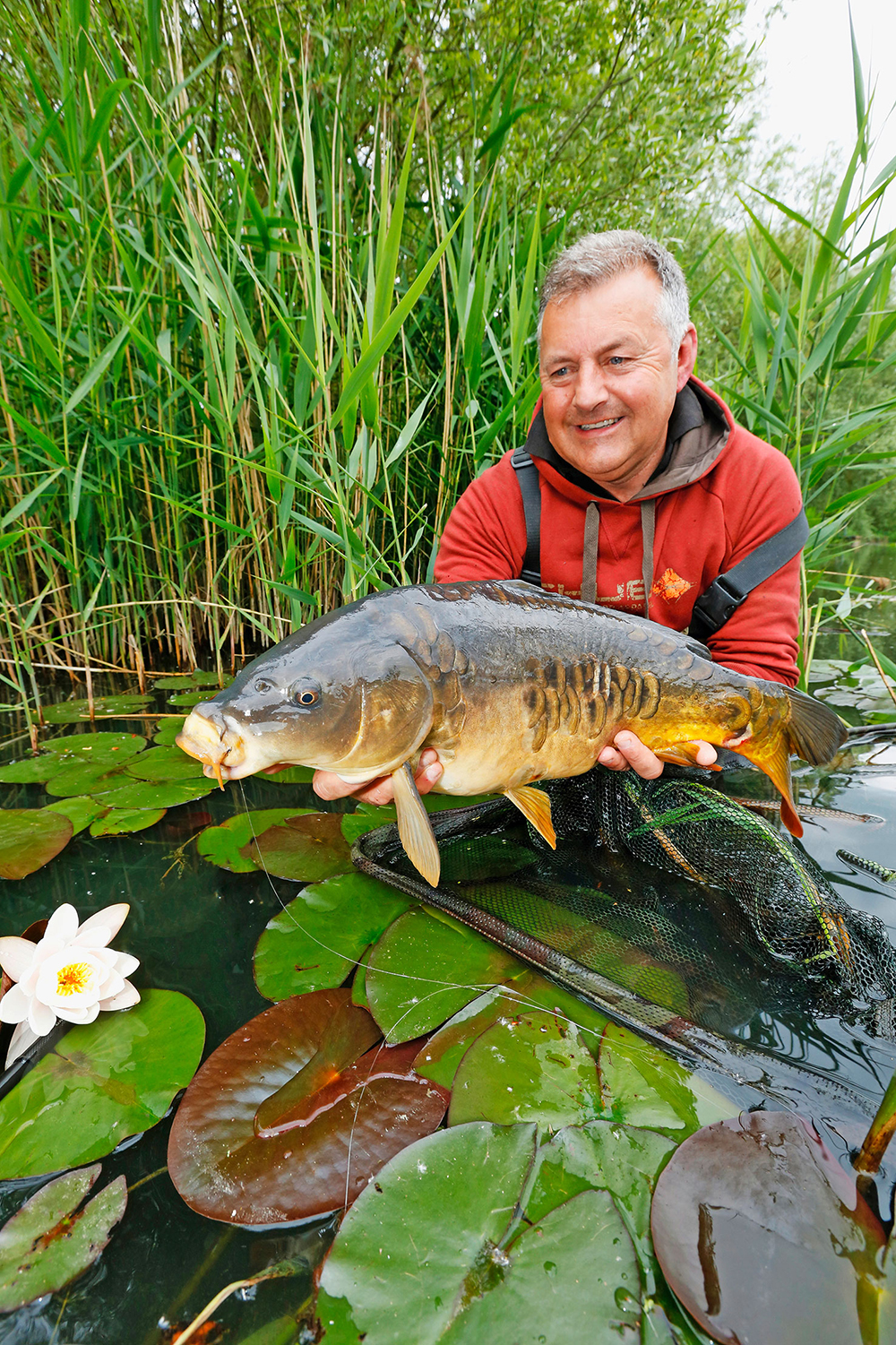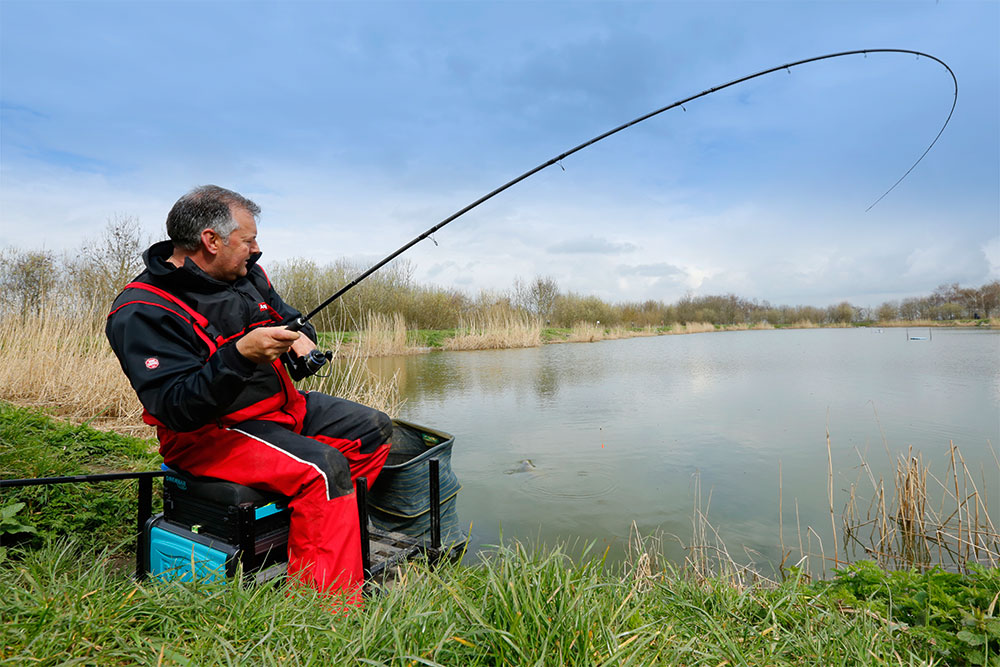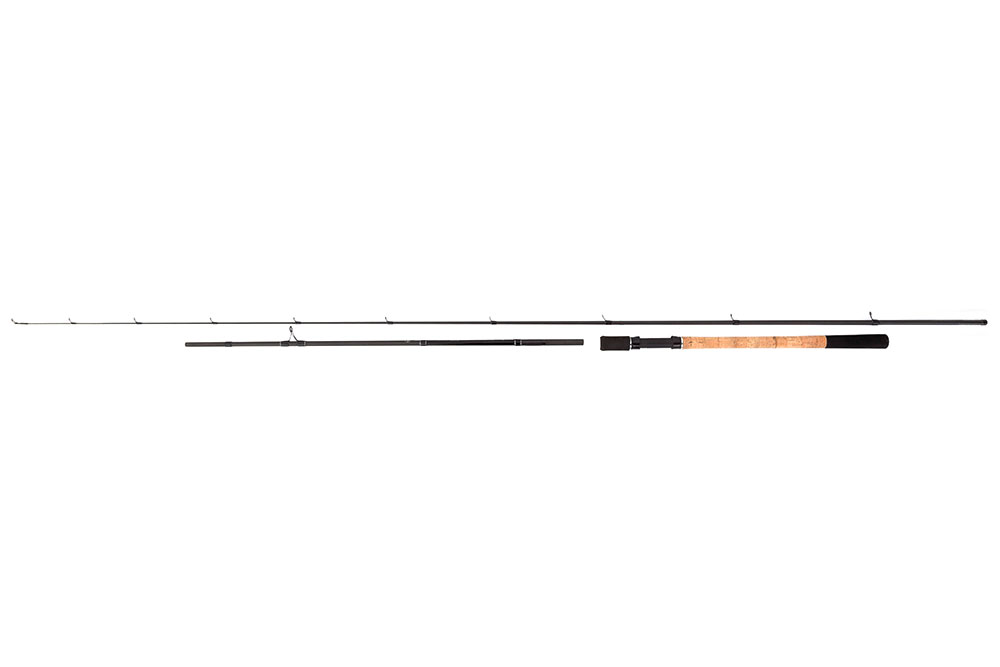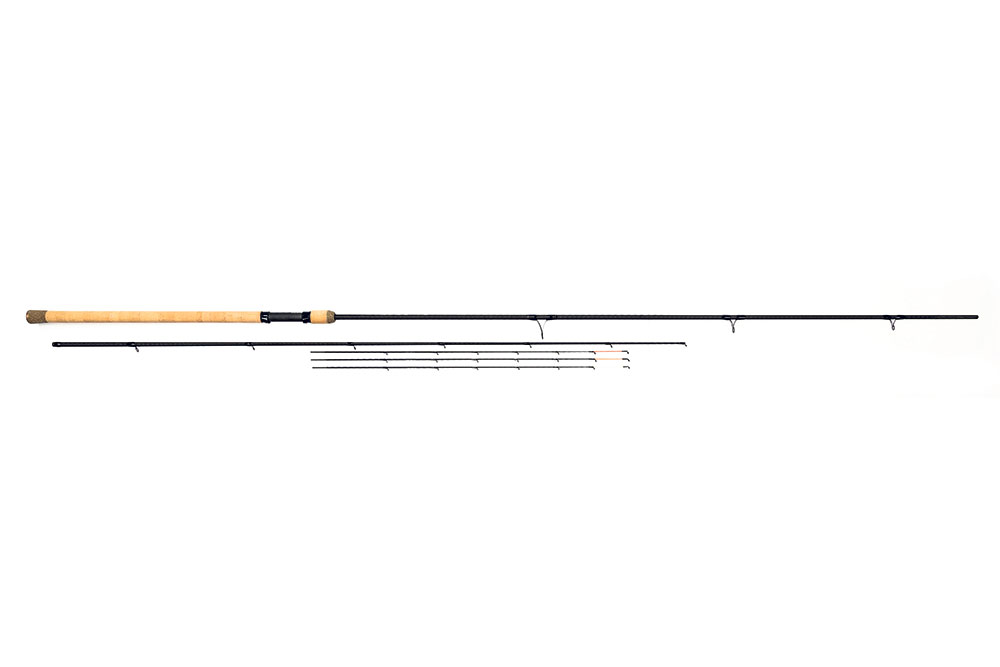Korum Trilogy Triple-Top Rod Review
Nobody in these topsy-turvy times should have been too surprised that one of the warmest weeks of the year fell slap-bang in the middle of September.
The poor old fish, having finished their nuptials, saw water temperatures on the rise once again – all very bizarre!
We now appear to be getting all four seasons in one month, and the recent hot and sunny spell has seen the fish, especially the carp, all back up on the surface.
All of which leads me nicely to this week’s live test. What better to tackle anything the weather throws at us, good or bad, than Korum’s recently released Trilogy rod? Handily, the company’s first-ever triple top fishing tool covers most specimen fishing situations.
Not that multi-purpose rods are anything new – your Auntie Maud’s old Grattan catalogue used to sell them – but they were truly hideous things, claimed to suit fly, match, pike and boat fishing but rubbish at all of these.
The new Trilogy is an altogether different kettle of fish, with a steely butt section and three interchangeable tops. These are rated to 1.75lb and 2.2lb test curves, and there’s also a Power Quiver option. The carbon weave construction adds strength where it counts, and a slimline cork handle with compact reel seat is all very stylish.
The medium-fast casting action will cope with all styles of specimen feeder fishing and legering situations.
The new Trilogy rod has three interchangeable tops
I’d originally planned to run the rule over Korum’s Trilogy on the Trent, using it for chub on the float and barbel on the tip.
To be honest, there isn’t anything particularly new about multi-purpose rods for river use. Plenty of twin-tops offer quiver and Avon options, but the Trilogy offers the angler a lot more versatility than that.
So, with the sun shining, my mission was to try three very different tactics in one day. First I’d target carp on floaters. Then it would be bream, tench and anything else that came along using a Method Feeder. Finally I’d switch to pellets and a pop-up in a PVA bag rig to see if I could snare a proper unit.
My destination for this marathon was Oxfordshire’s magnificent Clattercote Reservoir just outside Banbury, home to a truckload of bad-tempered and hard-fighting carp, shedloads of bream, and some really big tench.
Once in the car park, I quickly loaded my kit on to the barrow and headed to the shallow water at the top end of the reservoir – even shallower than I’d expected - and kicked off my session.
TACTIC No1 - Floater fishing
AS I suspected, there were plenty of decent-sized fish cruising the upper layers. So my opening gambit of fishing a hair-rigged mixer hookbait on a size 12 hook, attached to a 5ft-long length of clear 10lb mono hooklength and a 20g controller float, looked nailed on for a quick result.
The Trilogy’s 1.75lb top section is ideal for floater fishing
I’d chosen the Trilogy’s lighter 1.75lb top section for my floater tactics, as its slightly tippy casting and lightish test curve are ideal for what is basically heavy float work – you could also use this section to run a top-and-bottom Avon float down a river.
At 20g, the controller float was well within Korum’s suggested casting capabilities, maxing out at 5oz (141g). To me, that’s a tad optimistic and I wouldn’t want to load the 1.75lb tip with more than 3oz (85g). It does, though, have plenty of whip and would be ideal for heavy float and light lead tactics.
TACTIC No2 - switch to the METHOD
THE Power Quiver tip does exactly what its name suggests. It has a 1.5lb test curve and is finished off with an integral 19ins solid glass quivertip that I’d rate to around a 3oz-4oz test curve, making it ideal for pretty much any feeder situation.
The use of a glass quiver is a clever move by Korum, as tips like these have a smoother curvature than carbon, with superb bite detection whether you’re on a lake or a river. I chose a 45g distance flatbed Method and a much lighter 20g flatbed for the live test, and happily the rod handled both with equal ease.
The power quiver tip is a great tool for method fishing
The blank’s fast casting action makes this a very good two-piece tip rod that will handle a variety of angling situations. I can also vouch for its distance casting capability, as it will propel a feeder or lead up to 80 yards with very little effort.
TACTIC no3 - Mid-range PVA BAG
NOW it was time to step things up a gear to the 2.25lb test curve top section. I decided to fish this with a solid PVA bag full of micro pellets, a 2.5oz bag lead, and 12mm pop-up hookbait on a hair rig.
The heavier top section does dampen down the rod’s perky, fast action and it’s not really a distance-casting top.
But it does allow the use of heavier reel lines and terminal tackle when big fish are the quarry.
For me, the rod is ideal for mid-range PVA bag and straight lead tactics up to around 75 yards out. I found the blank’s slow, almost lazy progressive action quite interesting, and concluded it would be an ideal rod for targeting big bream or tench in snaggy/weedy swims where hook-pulls often occur. The action has a dampening feel with plenty of pulling clout.
The 2.25lb test curve tip is for proper carp fishing with heavier lines and leads
What’s the final verdict?
Korum’s Triple Top is one of a kind!
THIS rod can’t be easily rated against its nearest rival, as to the best of my knowledge there isn’t one. So have the guys at Korum truly cracked the three-rods-in-one conundrum? Well, what we have here is a really clever rod that is nicely finished, looks the part and clearly has many uses in the specimen angling arena.
What’s more, it comes at a price that makes it possibleto own a pair of Trilogies for less than what you’d pay for one traditional feeder rod.
So given the trend towards multiple rod set-ups, maybe you should push the boat out and buy three!
Price: £99.99
Push the boat out and buy three, you won’t regret it!
Daiwa Powermesh Carp 12ft 3lb test curve review
After around 20 years away, Daiwa’s iconic Powermesh carp rods have returned to the fold.
Seven models span three 12ft rods with 2.75lb, 3lb and 3.5lb test curves. There’s also a distance-casting 13ft, 3.5lb rod, as well as Spod, Floater and Stalker versions, so all bases seem to be covered!
The Powermesh heritage is still spoken of in hushed tones by carp anglers of a certain age, although the new breed are a far cry from their classic namesakes.
These latest rods are slimmer, faster and considerably lighter than the old-school favourites. The one thing they still have in common with the classic Powermesh rods is unbridled power – but more of that later!
Clearly Daiwa, currently designing and constructing its best-ever carp rods across all price points, hasn’t skimped on materials and furnishings for its latest Powermesh offerings.
The slimline blanks boast a strengthened high-grade woven carbon build. When called upon to do so they serve up more than enough casting power for long-distance and PVA bag work.
The astonishing parabolic fish-playing action, as you can see from the image, tightens up quickly across the rod’s mid-section so you’ll stay in charge when faced with hard-fighting big fish in snag pit swims.
As to fittings, these new Powermesh rods are finished to a very high standard, incorporating original Fuji DPS reel seats, slim profile shrink grip handles, stainless steel frame guides with lightweight LS ceramic-lined rings (including a 50mm butt guide) and an aluminium butt cap.
With ‘demanding situations’ a high live test priority, a trip to Oxfordshire’s Clattercote Reservoir was arranged. The big carp on this prolific runs water respond best to long-range solid bag and margin tactics, although the latter option is not for the faint-hearted. Rods need to be picked up and locked up fast to stop fish (as the Drifters sang) going ‘under the boardwalk’.
My choice of rod, the 12ft 3lb test curve Powermesh, can be found online as part of a ‘buy two or three’ package for as little as £84.99.
Now, you may be wondering why, when 3lb-plus tc rods are so popular, I chose the 3lb option. It’s quite simple really, and worthy of note if you’re a prospective customer. Having handled the entire new Powermesh range last October, I felt the 3lb rod was at least the equivalent of a standard 3.25lb or even 3.5lb Daiwa model.
What’s more, having now fished with the rod, I am qualified to say that it’s a fair bit more pokey than its rating would suggest.
That’s almost certainly down to its crisp action rather than its test curve, but bear it in mind if you’re looking to buy a set.
That is a course of action you shouldn’t miss out on if you’re in the market for a set of quality, high-performance carp rods at a sensible price.
They cast brilliantly, will play the biggest of fish superbly well and, I may add, would make awesome French kipper weapons.
Our verdict: The new Powermesh carp rods have enough grunt to safely cast the heaviest of leads, and will outcast virtually all other carp rods in their price bracket.
The fish-playing action is unrelenting, putting you in control at all times – these rods are worthy inheritors of the iconic Powermesh name.
Price: £169, but shop around and look on the internet for multiple deals
BROWNING HYPER CARP METHOD RODS review
Just before Christmas I was privileged to visit Browning’s German HQ and give their four new Hyper Carp Method rods a waggle.
Right away I felt these would be perfect for commercial fisheries back home, although at the time Browning seemed uncertain whether they would be available in the UK. However, I banged on and on to the company to release them, and to send me a couple of samples in for a live test. These the makers eventually did, so now I can deliver my verdict.
Now, Browning’s Sphere feeder rods are among the best money can buy, and these Hyper Carp Method rods are not a poor man’s version of these. They have an altogether different feel and action. There’s enough flexibility in the blank to pan large skimmers and bream without fear of hook pulls – the cushioning effect kicks in high up on the second section. This gives the mid-section a good deal more backbone, which you’ll really appreciate when the rods are being stressed to the limit.
All this and more I was to discover at Clattercote Reservoir, whose resident carp were wide awake and raring to go. My chosen rod from the Hyper Carp Method range was the 12ft version, which I reckon to be the pick of the bunch. With an 80g maximum casting weight, it has the length and three-piece build specification to launch a flatbed Method feeder a very long way. In my hands, however, it felt most at home with feeders up to around 40g.
The guides (including those on the quivertip) have sufficient inner diameter to allow the safe passage of 10lb shockleaders, which you need on most feeder venues requiring a mega-chuck.
Well, I hear you say, there are already dozens of long cast feeder rods on the market. What makes these from Browning so special?
For a start, the Hyper Carp Method will cope with all sizes of carp with some style, yet has enough flexibility to stay in touch with bream and skimmers right up to the net. Distances of 80-100 yards can be reached without you needing to be a tournament caster! And the price is remarkably reasonable for what you get.
The live test, I’m relieved to say, proved that the Hyper Carp Method rods are every bit as good as I’d hoped, and then some.
Once I got used to the blank’s fast taper action I was hitting the reel clip with a loaded 30g feeder at around 80 yards every time from a seated position, while standing up and giving it a proper whack I was getting past 90 yards. That was using a 4000 sized reel without a shockleader. I was left wondering how much further I could push its muscular cousin – the 12ft Hyper Carp Method Distance rod, with its £149 price tag – if it were fitted with a big reel and a shocker! This beast will chuck a 100g feeder with ease.
Back to the rod on test, and its fish-playing action proved remarkable. Even when subjected to huge pressure from proper lumps it showed no signs of locking up. After a few bream had put in an appearance not a single fish of either species was lost – which, as any Clattercote regular will tell you, is impressive.
Our Verdict
The Hyper Carp Method is the best rod of its kind and at its price that I have ever handled.
Okay, the multi-banded Euro colours of the quivertips may not be to everyone’s liking. But I’ll tell you this – you certainly can’t miss them which, to be fair, is the general idea.
This was one of the best live test days I have ever had, made even better by the presence of Mark Eves and Phil Ringer, who are highly entertaining, class angling acts.
Price: £139 (but shop around and you’ll find it cheaper)
Drennan Red Range Carp Feeder/Carp Waggler rod and Method Feeder/Pellet Waggler rod
Drennan's introductory Red Range rods are comfortably affordable, well-appointed and perfectly designed for the job in hand.
That said, I was somewhat perplexed when the two latest family members – the Combo Method Feeder/Pellet Waggler and Combo Carp Feeder/Carp Waggler rods – arrived on my desk. As first glance the pair, finished in Drennan’s trademark burgundy colour, looked like Tweedledum and Tweedledee – identical twins.
What’s more, it wasn’t that many years ago that combination rods only graced the sports pages of your mum’s Kays or Grattan catalogues. Such ‘one rod does it all’ tools were hideously heavy, multi-sectioned and multi-handled affairs, claimed to be suitable for everything from fly-fishing for trout to boat fishing for pike. In reality they were useless for everything.
Thankfully, such horrors are well behind us. Modern-day combo outfits are mainly well thought-out, intelligently designed and fully usable for all their stated applications. Most importantly, they are affordably angler-friendly, and all these praises can indeed be heaped on the Red Range Combo pairing.
As you’d expect from Drennan, both rods are very nicely furnished with lined guides throughout, secure screw-down reel seats, hook keeper rings, and a single push-in glass quivertip – 3oz for the Carp Feeder and 4oz for the Carp Method.
These rods are clearly targeting novice and junior anglers with limited tackle knowledge, and yet choosing between the two could be a confusing process. So, having fished with both, allow me to state the differences between them.
The Method Feeder/Pellet Waggler Combo has a bit more power, and is ideal for big fish using heavier kit. With its feeder top section fitted it will easily handle 30g-plus Methods, while with the Pellet Waggler section fitted it will cast floats weighing up to 15g.
The Carp Feeder/Carp Waggler model has a lighter action, suiting it to maggot, pellet, open-end and small flatbed feeders.
Fit its waggler top and it will cast floats upwards of 4AAA, offering a little bit more tactical flexibility.
For the live test, I decided on a joint appraisal, setting up both Combo models – the Carp Method in feeder mode and the Carp Waggler as a float rod. The chosen venue was the ever-productive Stretton Lakes just north of Peterborough, just two minutes off the A1.
The carp lake here holds decent-sized fish, and while it’s not as easy as your normal commercial day-ticket fishery, the carp here are always scale- and mouth-perfect, and fight like demons.
The Carp Method Combo with a 30g flatbed loaded with micro pellets has a maximum casting range of around 60 yards. Much further and you are going to lose some accuracy. However, once a fish is hooked the blank has a resolute flat spot-free progressive action, with enough backbone to give double-figure fish nightmares. I’d suggest reel lines from 5lb-10lb, matched to hooklengths of 0.15mm upwards.
The Carp Waggler Combo has just about enough tip flexibility and whip to cast normal straight wagglers carrying 4AAA or more.
The blank’s soft, semi-through action makes it ideal for taking on smaller carp and F1s, as well as tench, chub and big bream, using reel lines from 4lb-8lb and hooklengths of 0.14mm and beyond.
Our Verdict: These latest additions to Drennan’s Red Range are sure to be hugely popular with the solar-powered pleasure angler.
If you are reading this as a tackle shop owner, and you get a potential new customer that wants to have a go at commercial fishing, or someone on a tight budget looking to invest in new rods with commercial fishery potential, than I doubt there is anything better than this pair of beauties currently on the market.
Price: £85.95 (both models)

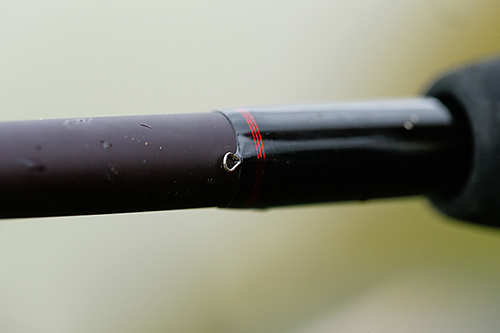

Matrix Horizon 10ft Carp Feeder rod Review
Matrix says its new Horizon Carp Feeder rods were developed to cope with the ballooning size of carp in modern match waters.
Mark Pollard has had lots of input into the design of all four rods which, despite being as strong as Shire horses on steroids, deliver a progressive action.
There are 9ft, 10ft (on test) 11ft and 12ft versions to choose from, depending on how far you want or need to cast. One thing in common to all is three graded push-in carbon quivertips of 1oz, 1.5oz and 2oz test curve.
The fast-taper high modulus carbon blanks are quick off the blocks when it comes to line pick-up and casting accuracy.
All have equal-length sections for ease of transport, a uniquely detailed weave print on their butt sections and decent length cork and EVA handles. Incorporated into these are screw-down reel fittings, while the blanks are furnished with low-profile ceramic-lined guides and a keeper ring as a finishing touch.
The 10ft Carp Feeder, my Horizon rod of choice for live test duty, is primarily a tactically flexible feeder and straight lead tool and, as such, is likely to sell well. There’s no maximum recommended casting weight, but by my reckoning you’d be safe with anything up to 40g.
The same goes for the line rating (or lack of it), but again, for me, anything between 4lb and 8lb would be fine – just the job for any commercial fishery whose carp have failed to sign up for Weight Watchers.
I needed to get the Horizon Carp Feeder rod to a water where bites come readily to a variety of tactics, so where better than Buttonhole Lake near Wisbech, in Cambs?
A swim opposite a paddle aerator gave me something to aim at in open water, while a large island away to my right would challenge the rod’s distance-casting prowess.
A standard inline 30g flatbed Method feeder flew 30 yards arrow-straight and bang on target. Once I’d clipped up, I reckoned it would hit 50 yards with just a bit more ‘push-pull’ on my part, but around the 40g mark the rod began to show its casting limitations. However, towards the end of the session I was still chucking a 30g feeder a good 65 yards-plus. On commercials that’s equivalent to hitting a six out of the ground at Trent Bridge!
What the Horizon has going for it is a superb action, which has obviously come in for some serious scrutiny and field-testing from the Matrix consultancy team. Sweet as a nut, back of the net, and more fun than a day at the fair, it’s just perfect for the job.
The rod bends exactly how, when and where it should, and has more than enough backbone to heave a reluctant lump over the rim of the landing net.
As you can see, this beast gave me a proper run-around, especially when it tried with all its might to get its head underneath the platform.
I don’t need to say much more about how flexible a backbone this rod possesses – look at the image and drool at its fast, progressive fighting action.
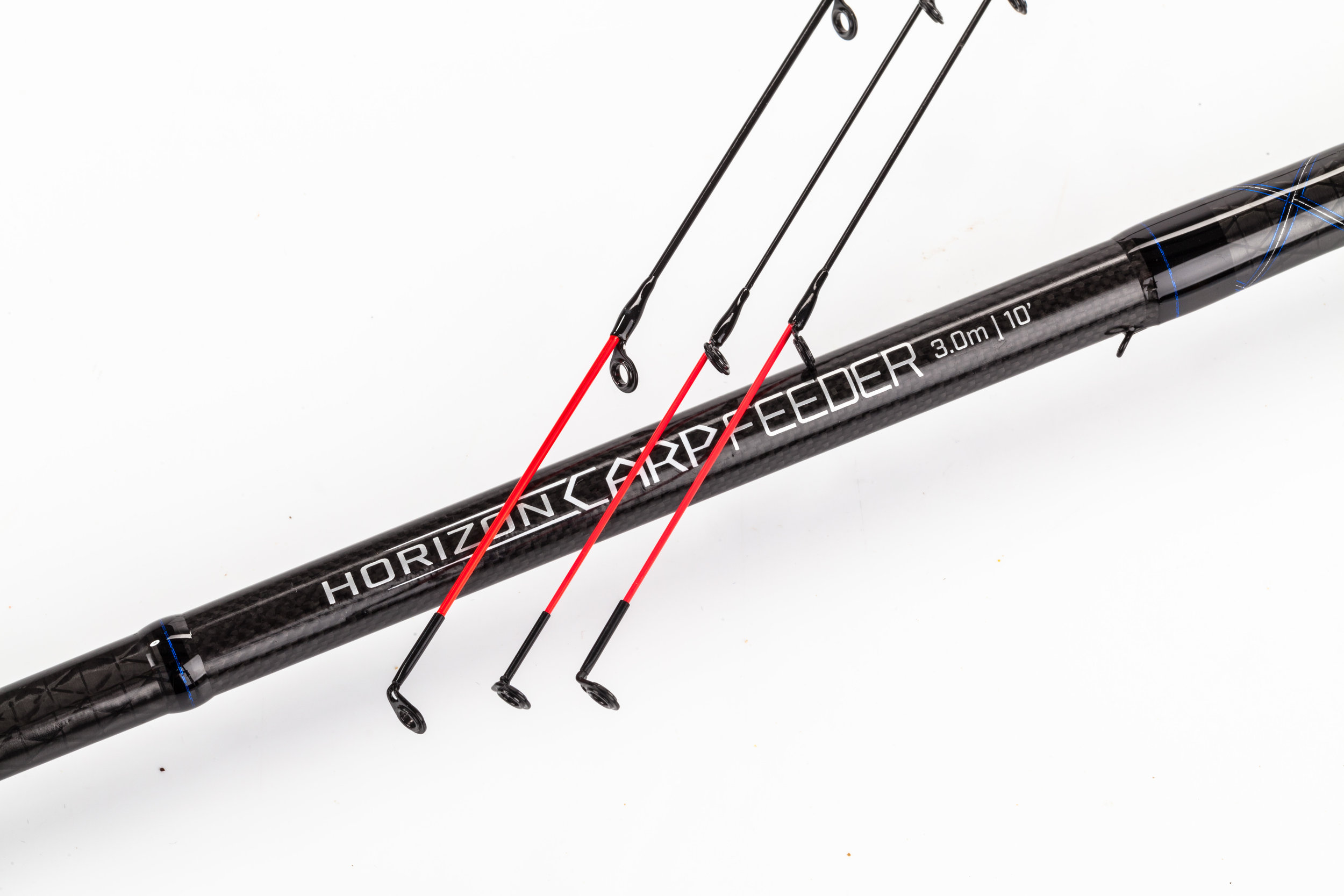

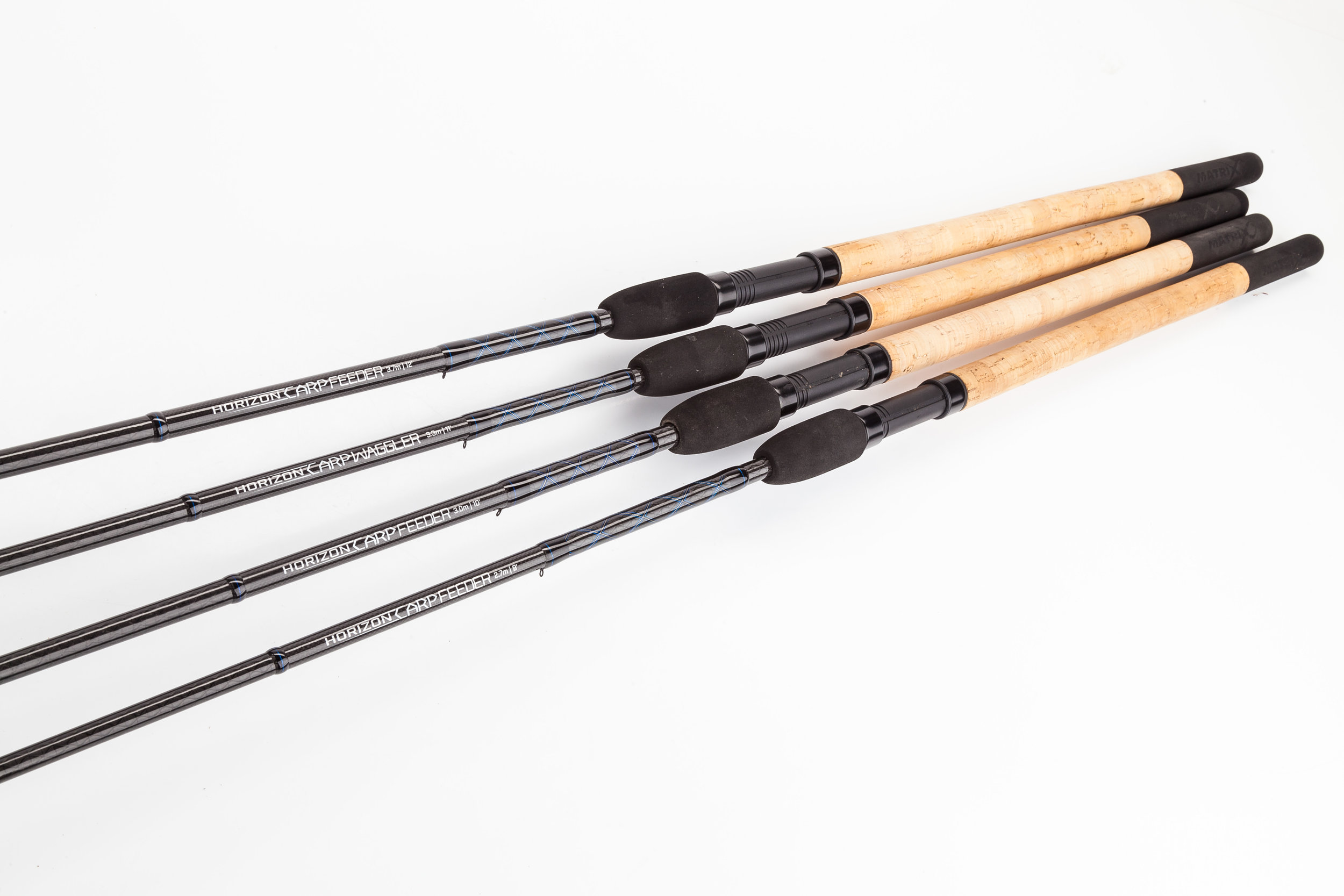
Our Verdict:
The latest Matrix Horizon Carp Feeder rods look, feel and fish just right, with a very high overall level of performance.
On the commercial fishery front, they have just about enough flexibility to be used for carp of all sizes, plus big F1s.
The 10ft model is ideal for Method, maggot and pellet feeder work, and would be equally at home throwing straight bomb set-ups for bigger fish.
It’s worth noting that all the Horizon quivertips are interchangeable with those on Matrix Horizon XC and XS models.
Price: £139
Drennan Acolyte 9ft feeder fishing rod
When it comes to rods, Drennan’s classy Acolyte family is right up there with the best.
The latest additions to the clan are these two delectable 9ft Feeder models that come in both Ultra (light-actioned) and the stepped-up Plus versions.
The pencil-thin, high-modulus carbon blanks come with three graded push-in quivertips, with all the furnishings and finishes you’ve come to expect to find on top-end Drennan rods.
Both versions are ideal for short-range straight lead and feeder work on natural and commercial fisheries.
TECH SPEC
•Best matched with reel lines from 4lb to 8lb (1.8kg to 3.6kg)
•Two-piece construction folds into a rod sleeve in seconds
•Neoprene rod socks also included
•Supplied with 1.5oz, 2oz and 2.5oz push-in carbon tips
•Extra tips also available
PAY AROUND
£169.99
WATCH THE VIDEOS
Daiwa Tournament SLR Feeder fishing rod range
The most talked about rod-range of 2018, the Tournament SLRs are already winning fans in the feeder market, most notably Angling Times columnist Steve Ringer.
SLR stands for Super Long Range and these four blanks are the next step up from the original Tournament distance models designed for the European market. With natural style and long range feeder fishing enjoying such a boom again in the UK now too, Daiwa has tapped into this market here, with spectacular results.
Built using Daiwa’s latest X45 carbon technology, these rods feature distinctive red butt section artwork, a boat load of power to cast even the shortest 11ft version a long way, and a fantastic progressive curve for playing fish.
The rods were designed and tested by Steve himself, who described the 12ft version as “the best rod ever”. A 13ft and a 14ft complete the range for extreme distance or big river work.
Other features include Fuji Alconite guides, a Fjui reel seat, dedicated 70cm carbon quivers, Bias Carbon V-Joint, an Armlock handle, a hook keeper and a new 1.5oz quiver on the 11ft model.
Granted they don't come cheap but if you want total perfection than you're going to have to pay for it and the £400-plus price tags reflect this.
PAY AROUND
£405 - £472.50
Shakespeare Cypry carp rods
To the best of my knowledge these new Shakespeare Cypry rods are the first from Shakespeare to be aimed specifically at carp anglers. Priced to appeal to the novice, junior or ‘just about managing’ carp fan, the line-up of 10 rods includes three-piece and telescopic models – popular on the Continent, less so over here.
BUY NOW from £32.99 at Amazon.co.uk
It’s the three 12ft two-piece rods with test curves of 2.5lb, 2.75lb and 3lb, as well as the beefier 13ft 3.5lb and 10ft 3lb rods (for work at close quarters) that will be of most interest to UK carpers.
The full carbon, two-piece blanks all feature an abbreviated handle with EVA thumb and casting grips, reliable screw-down reel seat, and a set of six hard-wearing ceramic-lined guides.
As I have said many times before, I hate using a carp rod that feels like a reincarnated telegraph pole. One of the best aspects of carp fishing is feeling the fight of the fish. If you stifle that fun by using a poker-stiff rod, you take away much of the motivation for going carping in the first place!
Now, I know there’s a time and a place for beefy carp rods. If you need to chuck a heavy lead a very long way you need something with the power to do the job.
But frankly, most carp anglers don’t demand such extreme performance. Many of them fish relatively small lakes where a 100-yard cast would land the rig in the trees on the far bank, in someone else’s swim, or even in a completely different pool.
Consider this too – an increasing number of pleasure anglers use a carp rod as a second ‘sleeper’ set-up, sitting it on a bite alarm beside them while they fish a pole or feeder. The aim is to produce one or two bonus big fish during the day, and the chances of that happening are greatly improved if the rod in question can chuck a baited hook a manageable distance where loosefeed can be accurately placed in the same area.
So, when putting Shakespeare’s budget-priced Cypry 12ft 3lb test curve carp rod through its paces, I knew I’d taken hold of a bit of kit that should prove hugely popular with a large number of anglers.
For the great majority of venues, this rod will cover every eventuality. Its workmanlike action will handle reel lines from 10lb to 15lb, and cast large Method feeders and solid PVA bags. In the hand it’s reasonably light and comfy, and it gets a big tick for its surprisingly responsive tip, which generates considerable casting clout when needed.
Plenty of transmission makes it a joy to play fish on – you can really feel every twist and turn of a hooked carp. The progressive action firms up quickly around the mid-section, providing enough backbone to steer fish away from snags and safely into your net.
During the live test at the quite superb day-ticket Willowbrook carp lake in Northamptonshire I used a variety of tactics to land fish approaching 20lb – small PVA bags, Method feeders and even surface controllers were well within the rod’s capabilities.
I got to thinking that it wasn’t all that long ago when I’d have expected a rod with this one’s build quality and all-round performance to set me back at least £100. At less than a third of that, the Cypry is an out-and-out steal.
THE VERDICT
Shakespeare’s Cypry range is ideal for anyone wanting to get into this addictive branch of fishing. It offers the would-be Terry Hearns lots of tactical scope, with enough power to handle Method feeders and solid bags.
A progressive action enables L-plate carpers to hit distant marks if and when required, but at the same time they needn’t worry that fish will break the line or pull the hook out at the net.
Mark Sawyer
Korum 13ft carp float rod
Tech spec
- Weight: 325g
- Line Rating: 8lb - 15lb
- Eight ceramic line guides
- Full cork handles
- Heavy parabolic action
- Matt black finish
Now here’s something a little bit different from Korum, a new range of Carp Float rods in 12ft and 13ft lengths.
With 1.5lb and 1.75lb test curves, what’s so unusual about that, you may ask? Well, they are intended to put the fun and pleasure back into carp fishing, by enabling anglers to use stealthy float tactics rather than today’s more usual straight lead or Method feeder approaches.
The K-Flex carbon blanks have a powerful parabolic action that kicks in steadily as pressure is applied, and both rods will handle big carp with aplomb. Other key features include matt black livery, full cork handles, and rugged nylon reel seats with black metal hoods. You also get eight light, double-legged ceramic-lined guides.
The downside is that such a powerful progressive action reduces casting capabilities a tad, so if you’re harbouring notions of using one to plonk a 4AA waggler 30 yards out, forget it. They will indeed reach such distances, and more besides, but only when partnered with heavier floats from 20g upwards.
That’s not a negative in my book, as I reckon their longer lengths and superb action make these ideal stalking rods – the extra reach can be used to delicately present a baited hook close to marginal reeds or snags.
I can already hear mutterings that most stalking rods are short 7ft to 9ft affairs for dropping leads and PVA bags into holes in weed. But find a reed-fringed lake, get your chest waders on and put a few free offerings into likely looking spots. Chances are you’ll find a few fish feeding, and now you can silently drop a bait right on top of their noses, with instant and explosive results.
The reed-fringed waters of Willowbrook Lake in Northants play host to plenty of decent-sized fish that like to roam around the margins looking for spilled feed. So on a quiet Monday morning, armed with little more than a landing net and a boxful of corn, I wandered around the fishery with the 13ft Korum Carp Float rod.
Twitching lily stems revealed something moving down below, so I scattered a few grains of corn over the area and lowered in a small straight waggler shotted with three No8s spread down the line. Instantly my double corn hookbait was snaffled, and in a torrent of spray and boils the fish bolted off, leaving a wake worthy of any torpedo.
This is the moment when any carp rod worth its salt steps up to the mark. Tightening down on the reel’s clutch and holding the rod on the horizontal plane, I applied side strain that slowly but surely brought the fish to a halt.
The rod’s heavy parabolic action had more than done its job in tiring the carp, yet at the net it had enough flexibility in the tip to absorb my quarry’s last-minute lunges without risk of a hook-pull or a parting of the line.
Price | 13ft £44.99 | 12ft £42.99 |
Angling Times verdict
What a great rod from Korum this is! It’s loads of fun to use, with exactly the right blend of fish-playing power and finesse, and perfect for margin fishing when really big fish are on the cards. Its two-piece build means it can be easily carried to the bank ready made up, and is therefore ideal for a short evening stalking session with a float in the margins.
Mark Sawyer
Greys Prodigy Apex carp rod
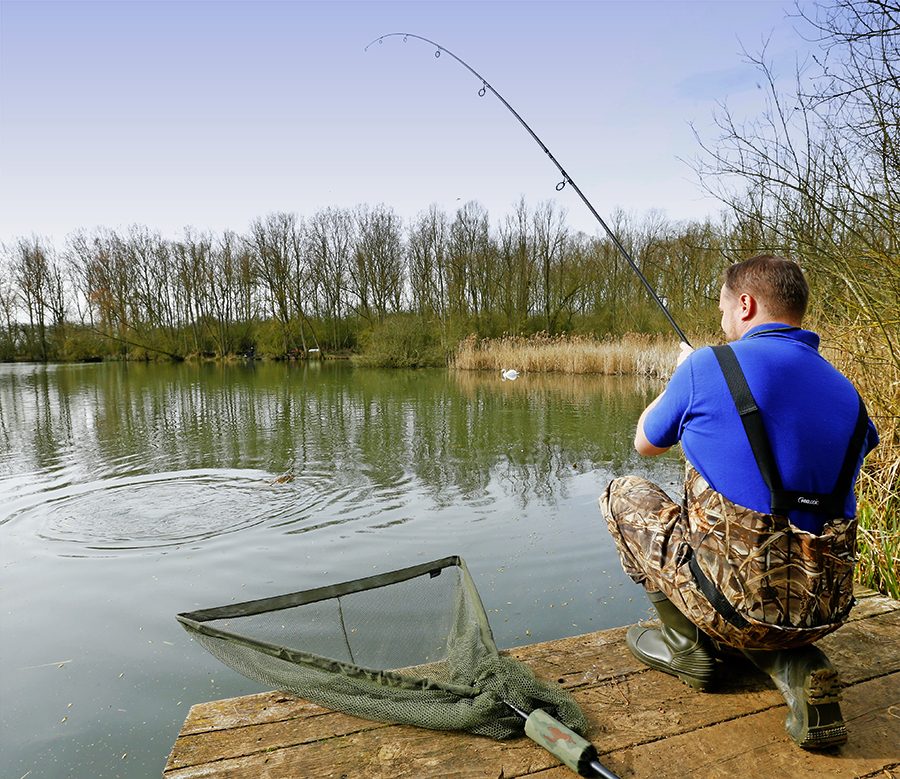
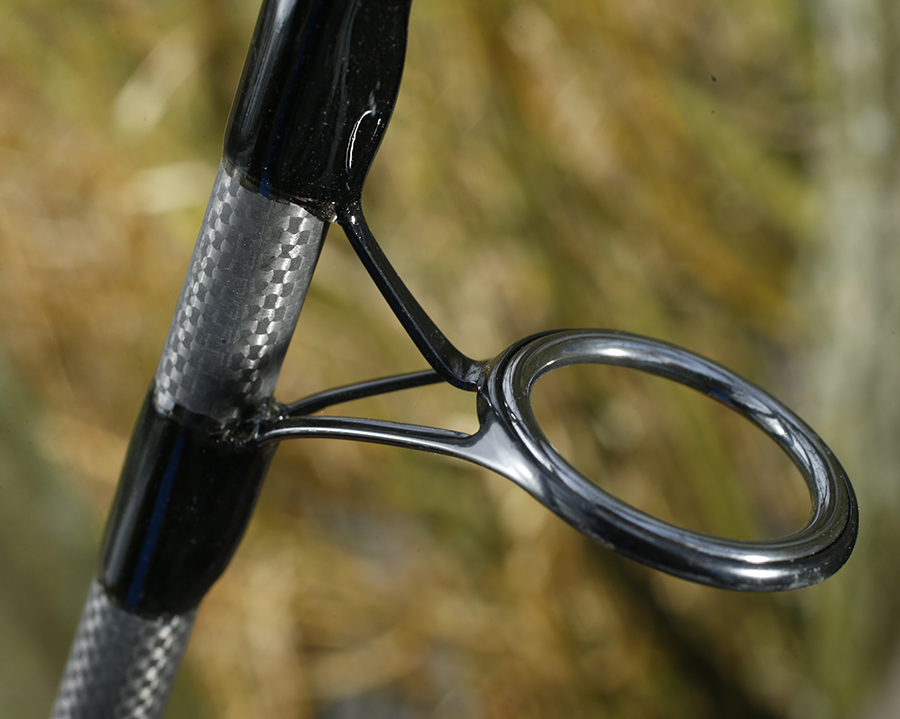

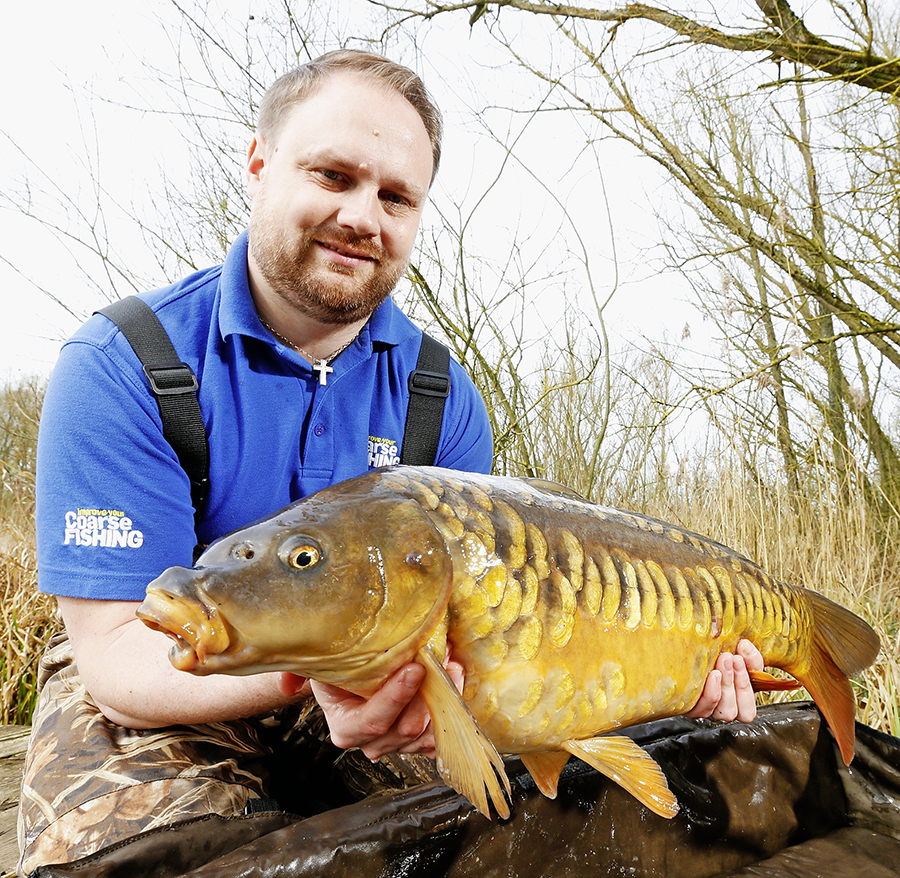
TECH SPEC
Toreon Nano Composite construction
2K-1K high modulus woven carbonfibre blank
Crisp progressive action
Carbon Armour blank finish
Fuji DPS-18 reel seat
Full Japanese shrink wrap handle
The Prodigy Apex is the latest addition to Greys’ best-selling Prodigy range of rods, which over the years have gained a well-earned reputation for incredible performance at an affordable price.
The Apex rods start at £169.99 RRP for the 10ft 3lb model, going up to £200 for the 12ft and 13ft 3.5lb rods. These prices put the rods into the mid-range bracket where you expect that little bit extra for your money as opposed to entry-level rods in the £50-£100 price range.
Greys had sent the 12ft 3.25lb model for us to take out and nowadays this test curve would be classed as a good all-rounder. If you’re only planning on investing in one set of carp rods these will cover most jobs. Although they may be a little overgunned for fishing close in, they’ll still do the job, but they can easily chuck a large lead or PVA bag a decent distance that a rod with a lighter test curve would struggle to match.
We made the short journey to Northamptonshire’s Willowbrook Lake and straight away found a few carp making the most of the early spring sunshine in a shallow bay at the top of the lake. A clump of reeds knocking no more than a couple of rodlengths to the right of the swim revealed fish location after throwing in a handful of corn and broken boilies a rig was flicked towards the spot and the rod placed on the ground.
A few minutes later, the tip hooped round and I was bent into a carp. The rod’s smooth, progressive action easily cushioned the powerful lunges of the fish as it did its best to find sanctuary in the reeds. Ultimately the carp was no match for the power and control of the rod and it was soon sat in the net. The Prodigy Apex has benefitted from the use of Toreon Nano composite material technology. This not only makes the blank incredibly slim and lightweight but also gives it increased strength and finesse. The rod action has been specifically designed to get the best out of modern, powerful, overhead casting styles and the Toreon technology promotes a super-fast tip recovery speed. This gives the rod a crisp and responsive feel normally associated with ultra-high end carp rods.
The sublime woven carbon finish is 2K on the butt and 1K on the tip and features a durable Carbon Armour blank finish. Other features include a Fuji DPS-18 reel seat, stealth black anodised collars, a slim, shrink-wrapped handle and balanced stainless butt cap. If you’re looking at making the step up from entry-level blanks, then the Prodigy Apex rods are worth serious consideration.
THE VERDICT
Not only do they perform great but aesthetically they look the part too. I wouldn’t have been surprised if they had a price tag of over £200, so for £179.99 they are excellent value. Having used the 3.25lb model I can confirm that it is a real jack of all trades and will handle everything from catching carp close in beneath overhanging trees, to blasting out rigs to 100 metres.
PAY AROUND
£159.99
James Furness
Avid Curvex range
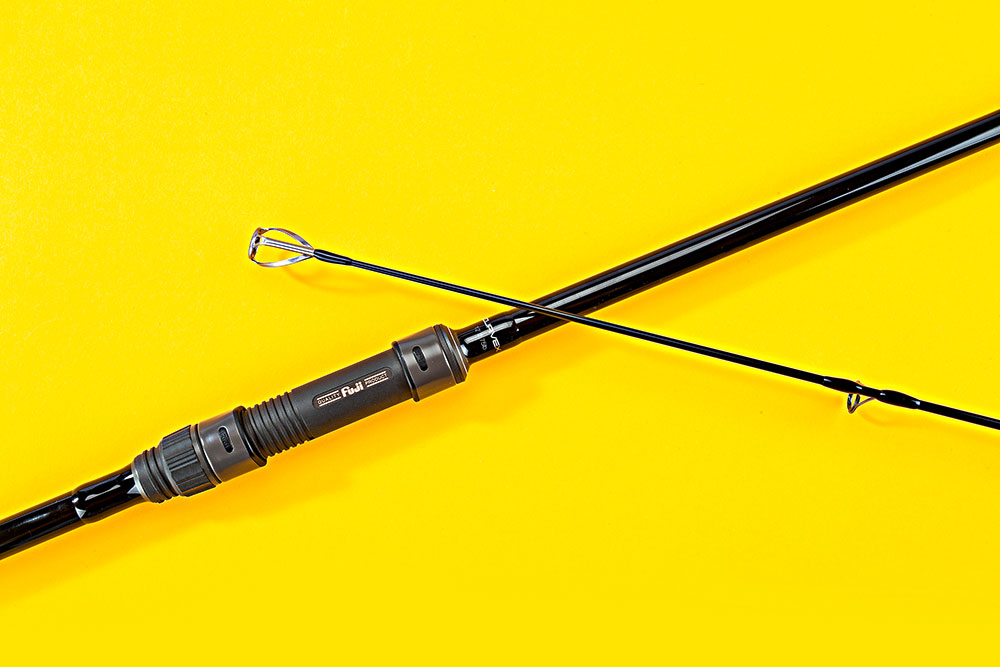
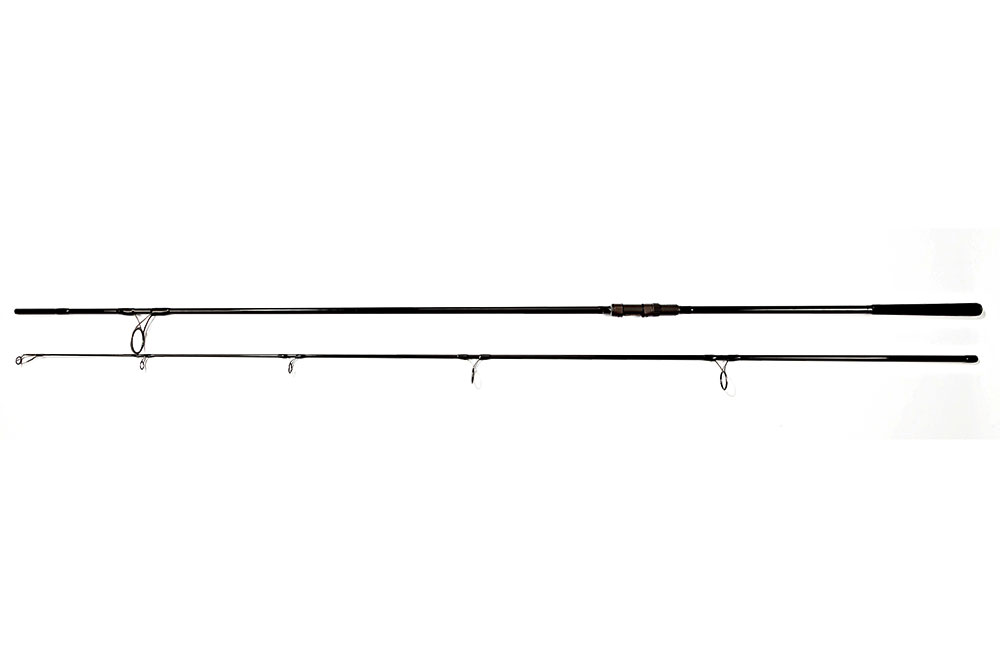
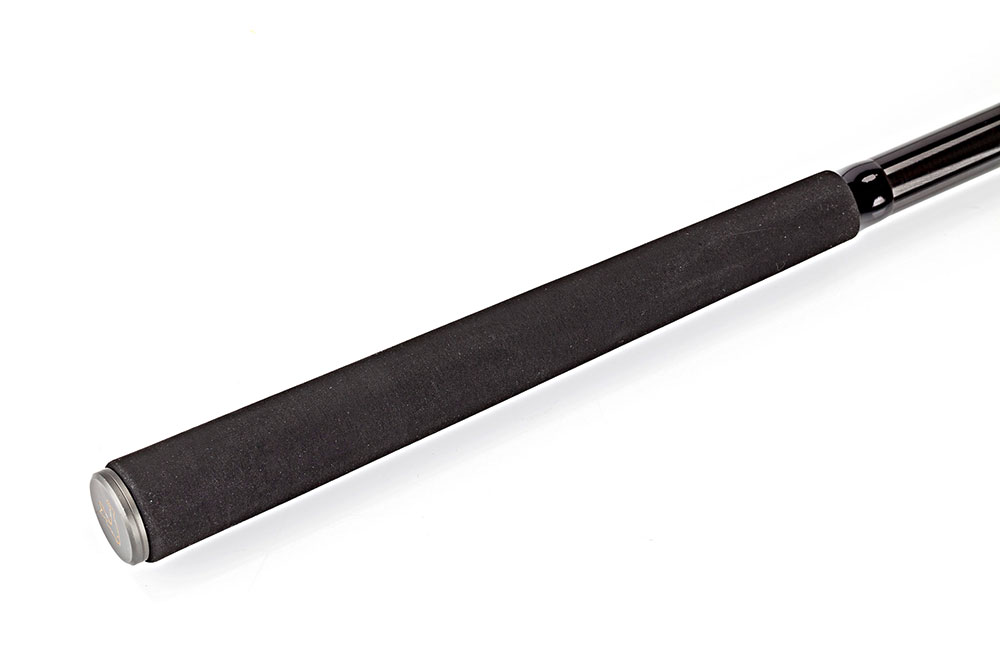
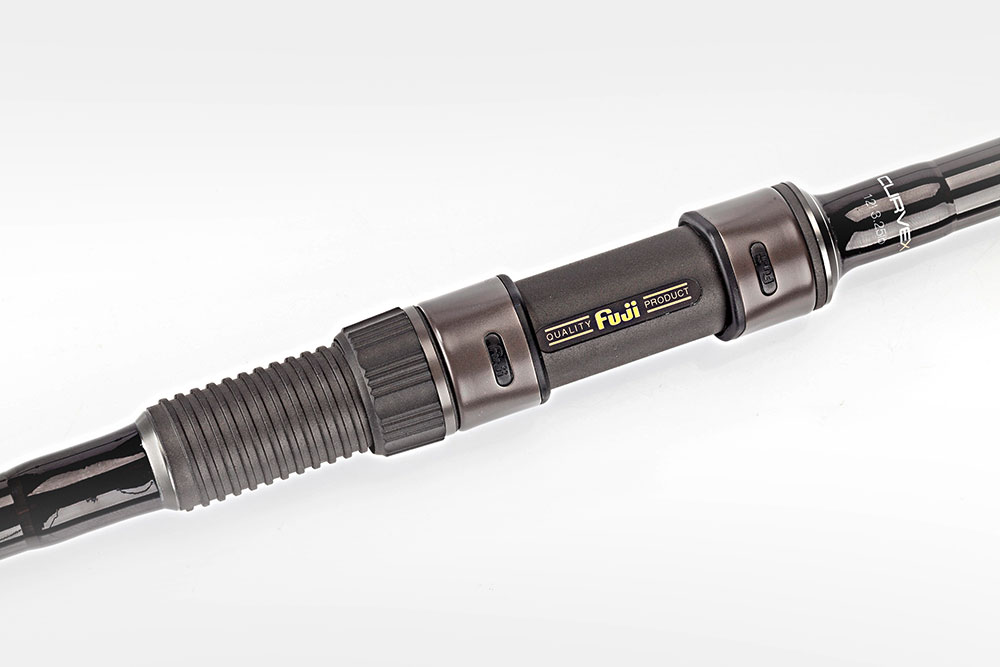
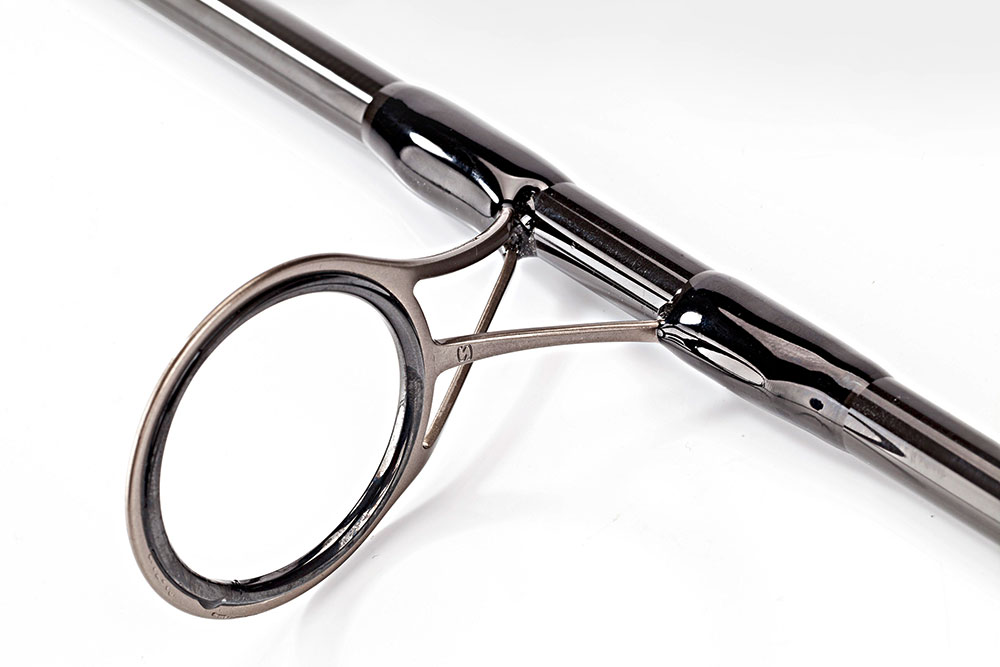
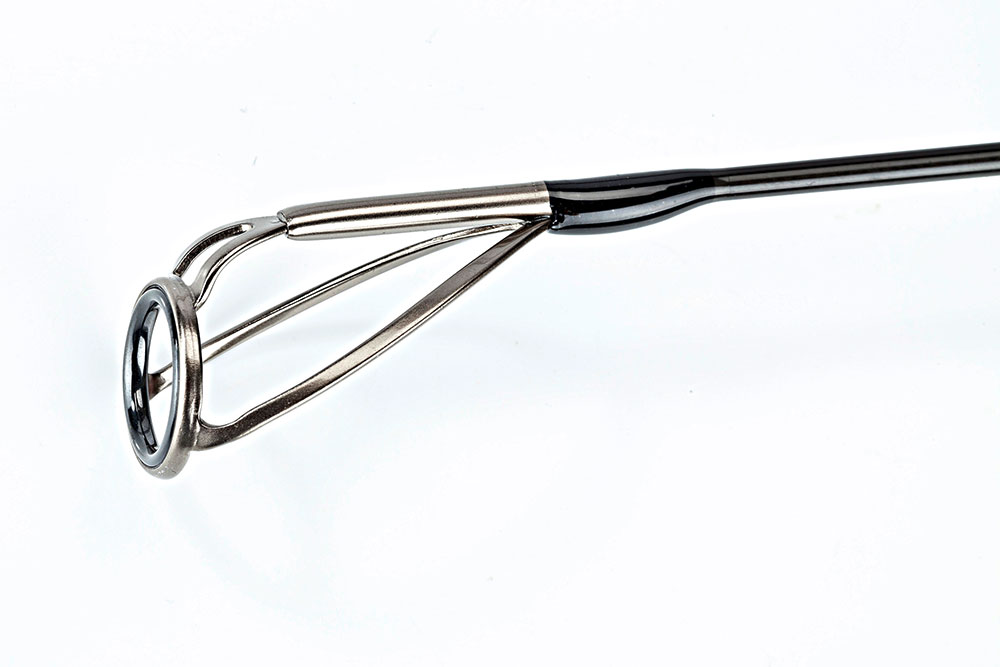
PAY AROUND
10ft, 3lb test curve £139.99
All others in the range £149.99
Big-carp brand Avid continues to come up with very innovative products, and these four new Curvex rods are bang on the mark, offering the modern carp angler something completely different from the norm.
Teaming an almost ‘old school’ through action with modern materials, these rods – coming in three lengths and four test curves – offer an intense fish-playing experience that allows the angler to feel every shake of the head.
The non-locking action doesn’t sit that well with casting to the horizon – but when you hook a big fish you can battle it with total confidence.
Even so, these two-piece rods have more than enough grunt for all but the largest of open waters.
It’s simply a matter of matching their 10ft, 12ft and 13ft lengths and 2.75lb, 3lb 3.25lb and 3.5lb test curves to your needs.
You can use them with smaller hooks, lighter hooklengths and thinner diameter reel lines without having to worry about hook pulls or painful partings of the way when your quarry makes a last-minute bolt for freedom.
There’s no doubt that finesse pays when the water cools and clears, and for that reason alone the Avid Curvex will appeal to anyone waking up to frost on their bivvy and grass crunching underfoot.
The ‘bend, and then bend some more’ action will also prove useful when big fish need to be played through weedbeds, or reeled in with washing lines of loose weed in tow.
Despite its best efforts you’ll be able to keep a big fish moving in the right direction without fear of breakage.
Other key features include original Fuji reel seats with Japanese shrink-wrapped handles, lightweight SiC guides throughout, anti-frap tip guides to prevent crack-offs, and 50mm enlarged butt guides on the 12ft and 13ft models.
All in all, these rods have the X Factor! It’s ‘four yesses’ from us!
Nash KNX Carp Rod 3.5lb Test Curve
TECH SPEC
Test curves: Available in 2.75lb, 3lb and 3.5lb test curves. A 4.5lb Spod/Marker dual concept rod is also available
Handles: Full EVA Duplon handles on KNX carp rods, abbreviated shrink grips on KNX Spod/Marker rod
Guides: Exclusive Flexor guides for reduced blank distortion and greater power transmission, 50mm butt rings on 3lb, 3.5lb and 4.5lb Spod/Marker models
PAY AROUND
12ft 2.75lb £76.99
12ft 3lb £87.99
12ft 3.5lb £98.99
Spod and Marker 12ft 4.5lb £87.99
When carp rods look this good you’d expect two things of them – great performance and a hefty price tag. In the case of the KNX models, Nash has well and truly delivered one of these.
First let’s deal with the all-important looks. The completely non-reflective matt black blanks with matching gloss black decals may at first glance seem a tad dull, but they certainly give the rod an expensive classy look, guaranteed to draw admiring glances wherever you set them up.
When it comes to tasteful fittings and fancy furnishings, these KNX’s are of designer boutique standard. Their modern EVA and Duplon handles offer an easy, comfortable grip for casting and playing fish, and are finished with a laser-etched butt cap, complete with isotope slot.
A sultry black soft-touch rubber reel seat raises comfort to a whole new level – thanks to its clever skeletal design your thumb and forefinger can come into contact with the blank, giving improved ‘feel’ transmission from fish on the end.
Moving up the blank, you’ll find a line clip, then a 50mm butt guide on the 3lb and 3.5lb rods, followed by five more ideally-placed Flexor guides that reduce stress distortion during casting and give a seamless performance when playing a fish. Spigot alignment markings ensure the rod is always set up with the guides lined up straight. So this rod really does seems to be a class act, but what about its performance and price?
Price-wise it’s got to be a steal at £98.99 for the 3.5lb version on live test duty, £87.99 for the 3lb rod, and just £76.99 for the 2.75lb baby of the bunch.
With limited time available, the live test was geared towards what the 12ft, 3.5lb test curve blank is capable of.
I can happily report that it was more than capable of casting 3oz leads teamed with solid PVA bags and mesh sticks. Admittedly it isn’t an out-and-out casting tool, so if you’re thinking ‘unbridled power’ you may be slightly disappointed. The carbon composite blank doesn’t generate uite enough energy from its butt section, and loads the casting weight a little bit further down the tip than a horizon-buster of a rod.
That said, and for the money, Nash KNX rods are perfect for small to medium-sized carp waters where casts of up to 75 yards using solid PVA bag and mesh sticks are needed.
The progressive action makes it far less prone to hook-pulls than the ‘broom handle’ 3.5lb rods of yesteryear, which had no fish-playing action and scant feel. The KNX will handle fish from low doubles upwards, and make it a joy to catch them.
Completing the KNX collection is a Spod/Marker rod with a powerful 4.5lb test curve – so you can have a matching set if you feel like pushing the boat out.
VERDICT
Nash KNX carp rods offer the highest spec available in their modest price bracket. With on-trend looks and custom-built qualities, these multi-talented tools are ideal for venues – and carp – of all sizes.
If you’re just getting serious about your carping, and are looking for a set of good rods that won’t break the bank, I would take a long serious look at these.
Free Spirit CTX 10ft carp waggler rod
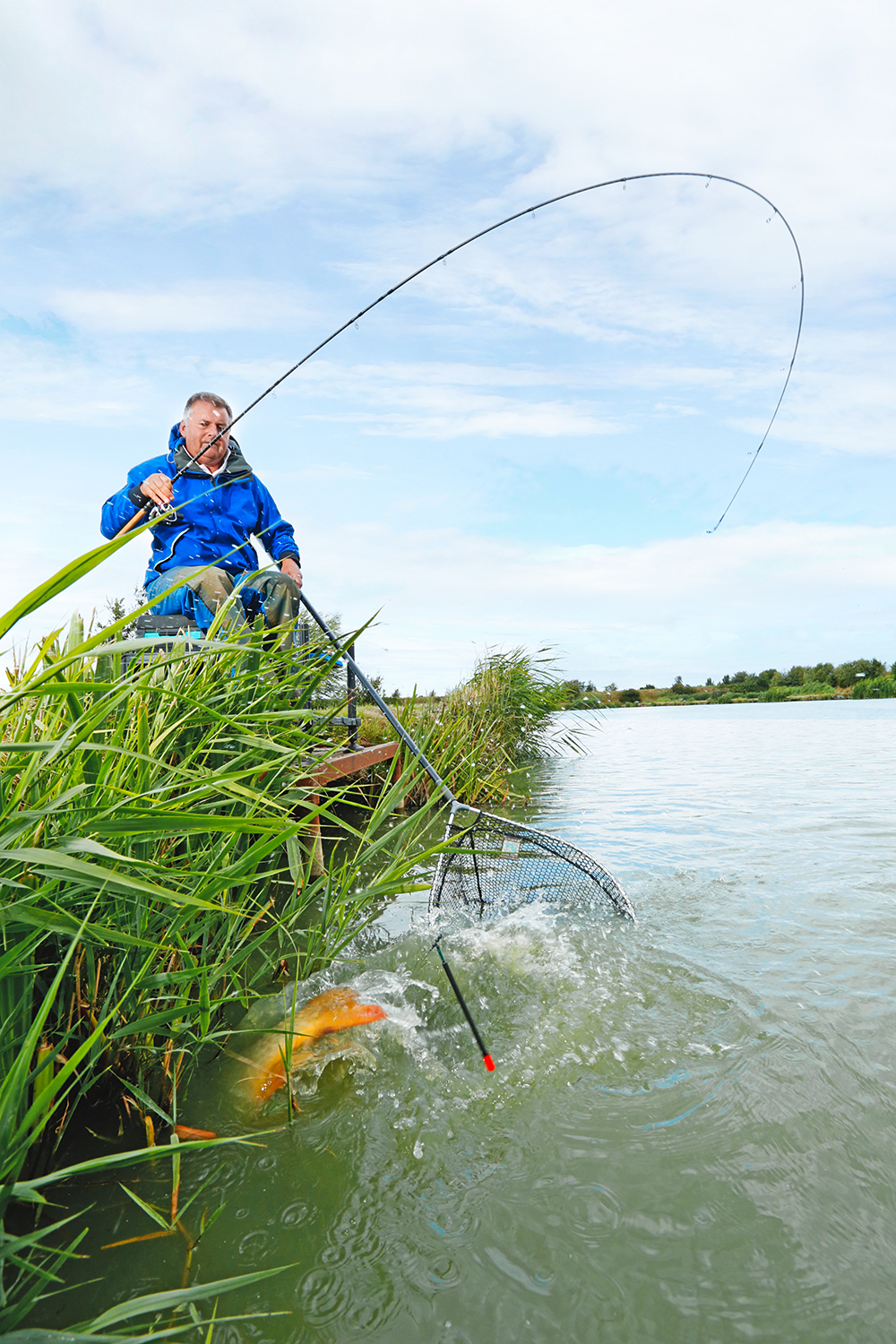
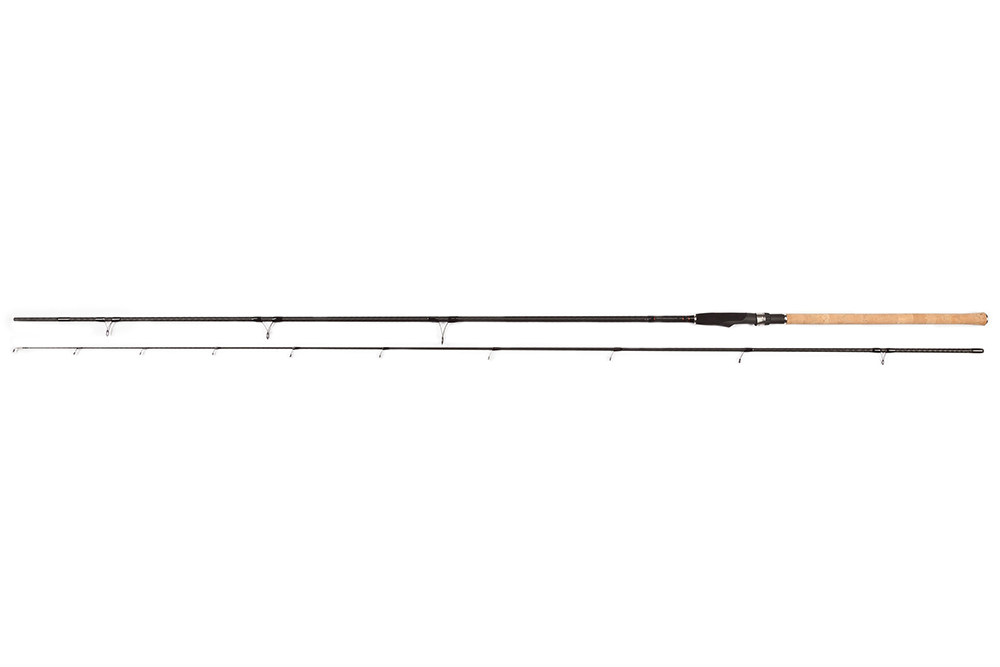
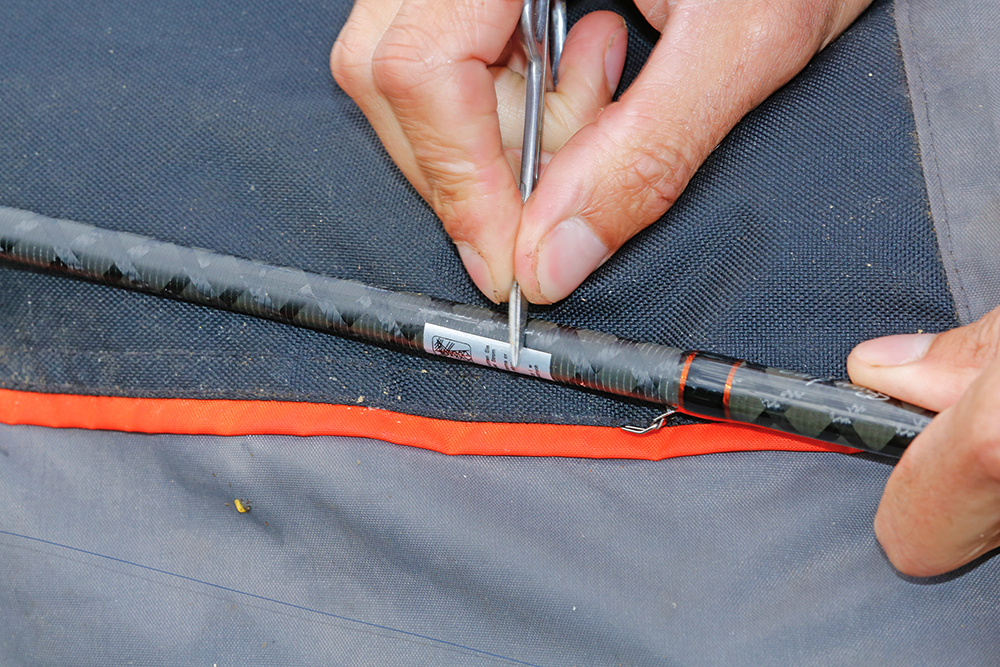
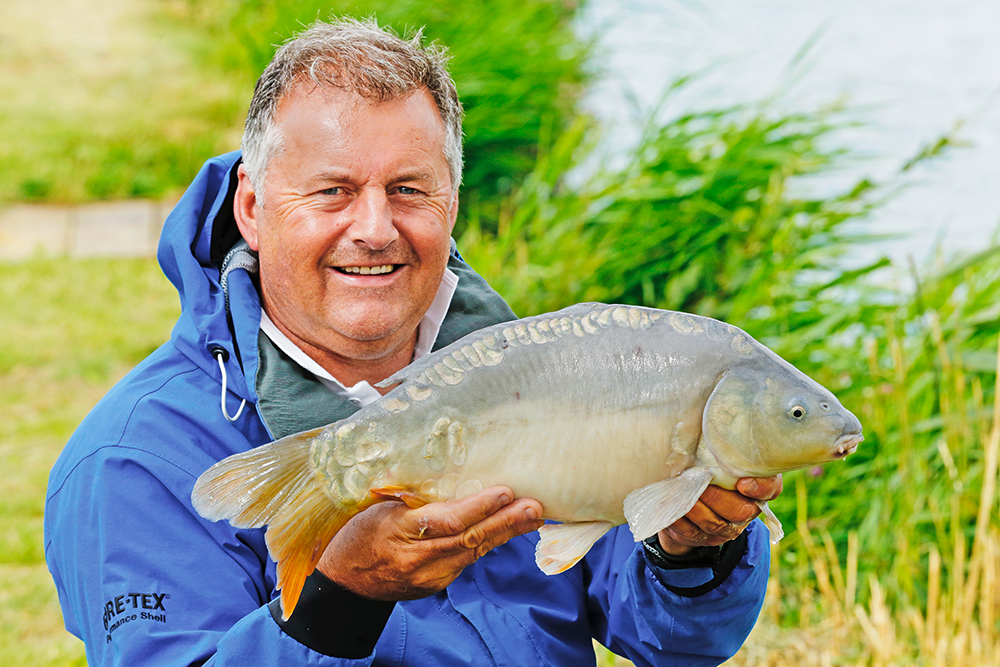
PAY AROUND
£94.99
On September 5, five Carp Waggler, five Carp Feeder and two Multi-Feeder rods from Free Spirit will hit the tackle shops.
All use the company’s tried and tested CTX specification, which has proved so successful in its carp and barbel rods.
The 40 tonne carbon blanks’ Bi-Axis weave makes them exceptionally light and immensely strong, and their brilliant paint and lacquer-free Perdurable finish is impossible to mark.
Other key features include reduced length handles (although the stepped-up SU Waggler and BW Feeder rods retain long handles for distance casting). The action of all the new rods gives an even build-up of power from tip down to butt, more than enough to stop powerful fish on light gear without the blank bottoming out.
Fast forward to the Oaks Strip at Decoy Lakes, near Peterborough. An early numbered peg at the top end of the Oaks, with the wind off my back, would in all likelihood prove to be a good testing ground for the CTX 10ft Carp Waggler rod.
Fitting the two sections of the rod together, it immediately struck me how slim and light it is. It doesn’t feel or look like an ordinary pellet wag chucker, either, being almost reminiscent of the featherweight old-school rods we used for squatt fishing on the Grand Union Canal.
There’s enough whip in it to be used with floats weighing as little as 3AAA. But the elfin 10ft blank still has more than enough poke to propel a waggler headlong into the strongest of winds.
This I discovered when, mesmerised by its all-round casting, fish playing and handling, I walked the rod round to the other side of the lake where my work colleague Ben Fisk was
live-testing a new margin pole.
Ben, one of the best young match anglers in the UK, is normally a man of very few words. But after just a few casts, and a couple of lucky early mug fish, he turned to me and asked whether he could ‘borrow’ the rod for his forthcoming weekend matches.
That alone should tell you how good the CTX 10ft Carp Waggler is.
VERDICT
Well, occasionally you just don’t see something coming. The comfort of its handling, the tip speed, faultless non-locking parabolic action, classy guides and woven carbon blank make this by far the best 10ft waggler rod we have seen, and at a price that won’t cause credit card meltdown. Go to your nearest tackle shop and have a look at one if you think I’m kidding.
Avid Traction carp rods
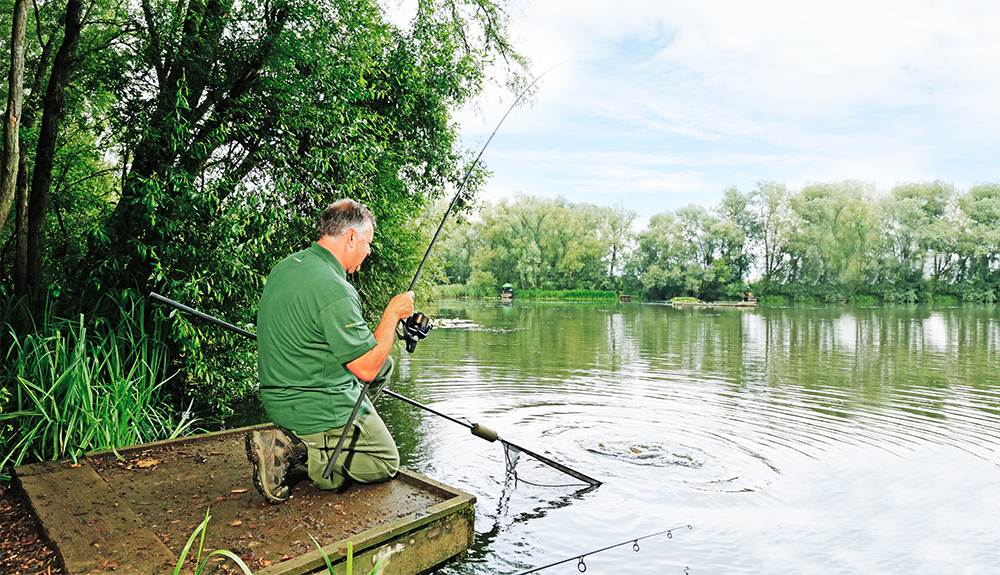
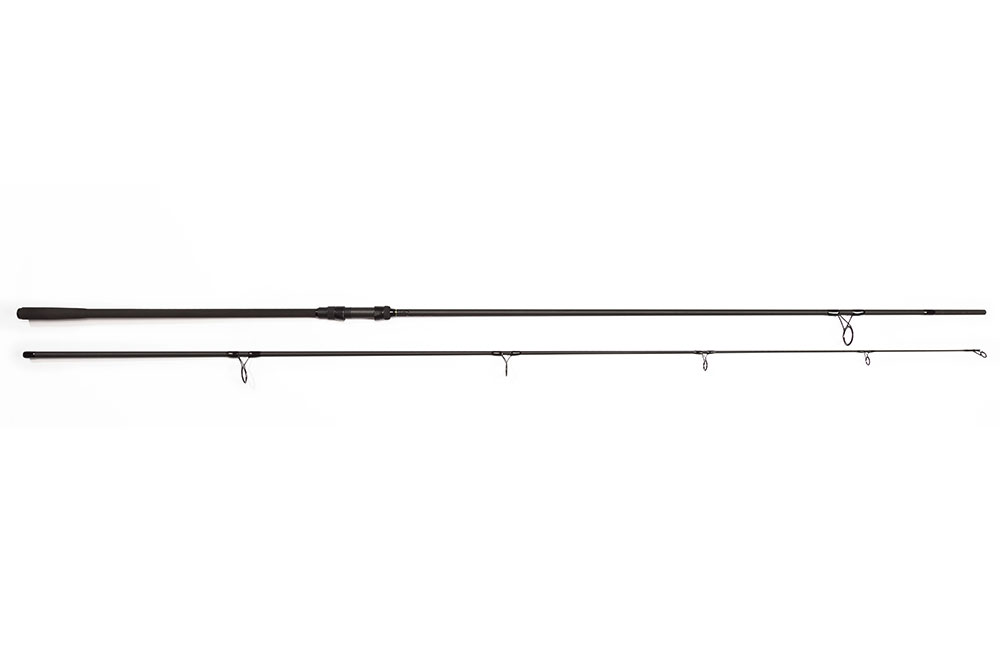
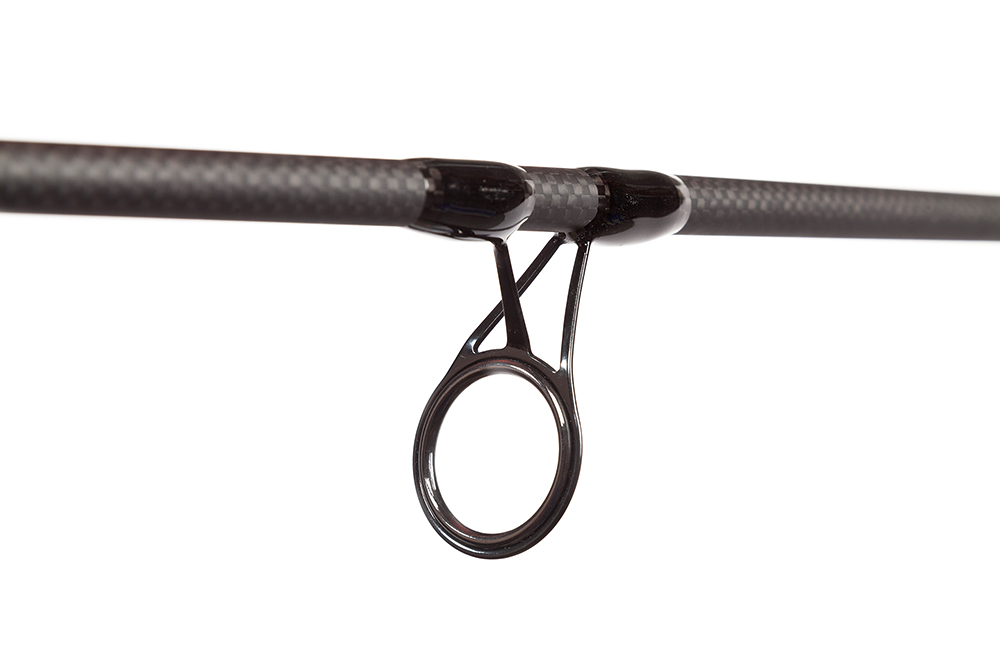
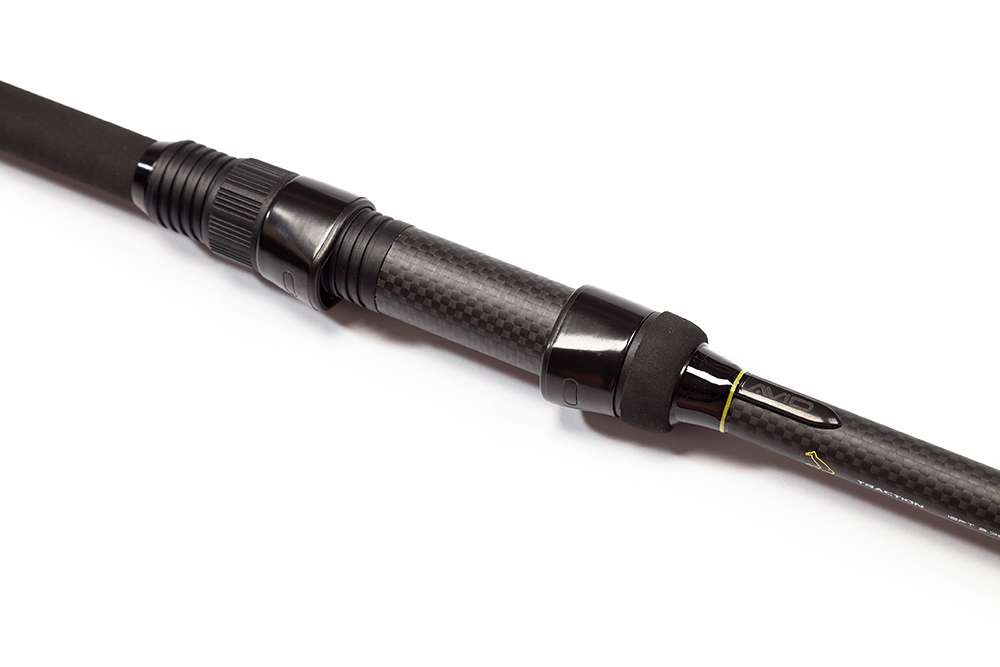
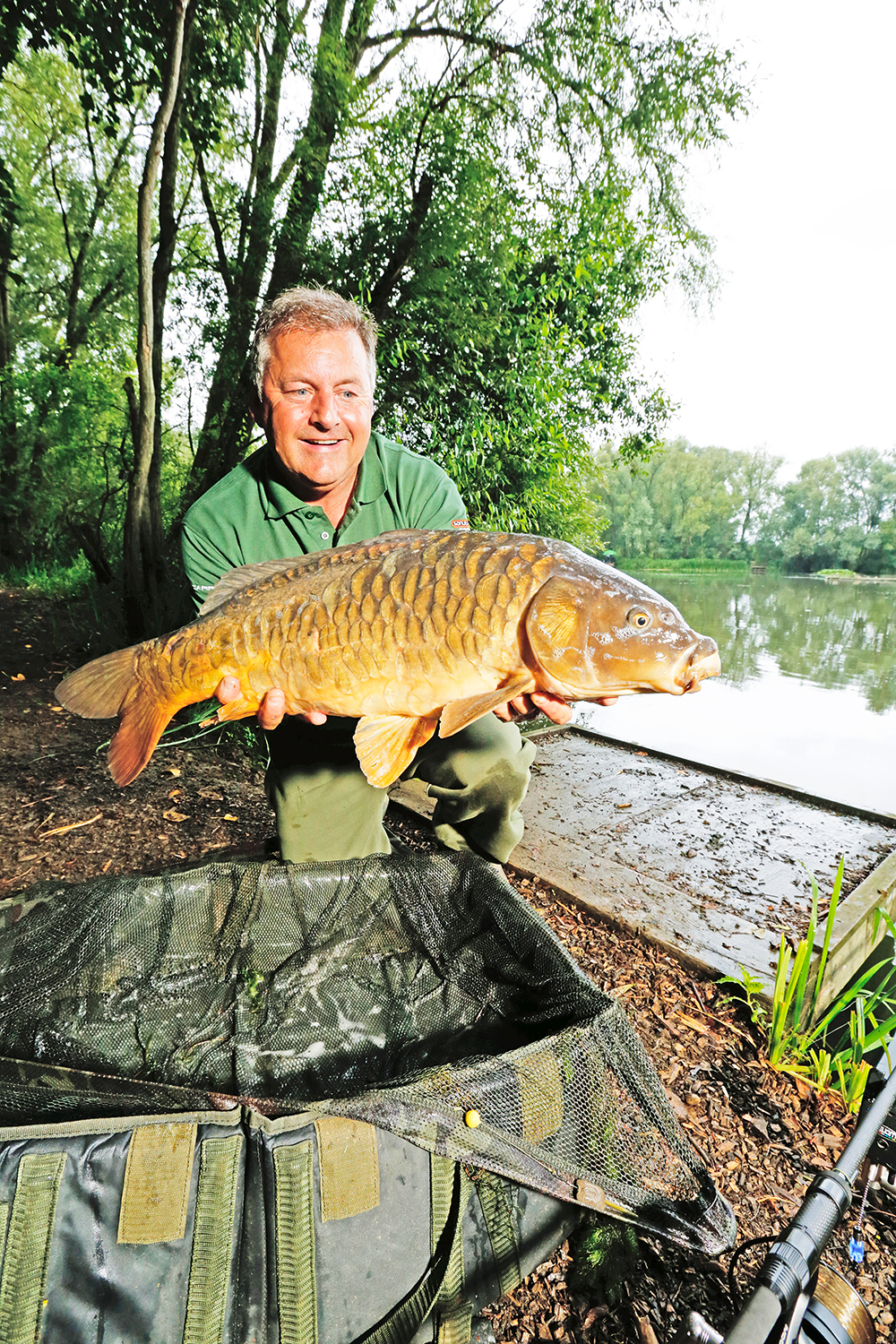
PAY AROUND
£79.99
Since their introduction a little over nine months ago, Avid’s Traction Carp rods have become the benchmark by which all sub-£100 models are judged.
Built from Reactive carbon fibre wrapped in a matt-finished 3K weave, each 12ft blank offers a unique take on the traditional parabolic action beloved of carpers. A slow build-up of power cushions the runs and lunges of hard-fighting fish, offering greater control when it really matters.
It’s just the sort of action needed for a modern day big-carp rod that multi-tasks.
The original Traction models carried test curves of 3lb, 3.25lb and 3.5lb, covering everything from solid PVA bag and stick work to middle to long-range Method feeder and straight lead work.
I more than proved the point when live testing a pair of the 3lb models last November at a cold and rather uninviting-looking Boddington Reservoir where a whack of 90-plus yards with a 3oz pellet-laden Method feeder was needed to reach its denizens.
You might think that most of the general heavy-duty casting work would be taken care of by the 3lb, 3.25lb and 3.5lb models. Avid’s development team could indeed have been forgiven for lying back on their super-comfy Benchmark bedchairs and feeling a bit smug.
But not a bit of it – enter the new 2.25lb and 2.75lb test curve blanks. Both rods boast the same Reactive carbon and 3K weave as the originals, but they have a slightly softer parabolic action suiting them to smaller waters, more modest casting distances and surface and zig rig tactics.
To test these attributes, what was needed was a medium-sized lake with a healthy stock of big, snippy fish that could be tempted on a wide range of tactics.
Northamptonshire’s day-ticket Willowbrook Lake, jam-packed with handsome fish to almost 30lb, fits the bill. It’s a superb daylight venue, especially if you’re after wetting the unhooking mat without waiting all day for a run.
First up was the new Traction 2.75lb rod, rigged with a 1.5oz inline Avid lead and solid PVA bag full of micro pellets.
The blank took little persuasion to launch its payload to the centre of the lake, close to a man-made floating island. It could easily have been burdened with a heavier lead and tasked with a far longer cast.
The slightly softer 2.25lb model was kitted out with a zig rig and 2oz lead, cast close to one of the numerous lily beds. It handled the weight easily enough, but it’s definitely not a rod with lots of clout. For all zig, surface and margin work, though, it’s ideal.
I didn’t have to wait long for the alarm to sound, as what felt like a decent fish ploughed straight through two weedbeds before I even had a chance to pick up the rod and tighten down the clutch.
Summer carp in shallow water can be tricky enough to cope with on their own, without having half a hundredweight of weed festooned along the line like so much washing. With the 2.75lb blank, it seemed all would be lost.
But deep in the belly of the blank was a core of steely strength with enough pulling power to drag the beast from its lair. The fish, having gone underneath the weed and out the other side, was still snarky about being hooked, but eventually both carp and weed came safely over the net cord.
What more can you say, other than that these rods are fabulous? I also managed two on zig rigs on the lighter model, and would happily add both to my holdall.
VERDICT
Two more sure-fire winners from the Avid stable. The addition of lighter 2.25lb and 2.75lb test curve rods further enhances the comprehensive Traction Carp range. Ideal for smaller waters, but still more than capable of handling very big fish, the heavier rod is perfect for small bags, Method feeders and zigs.
Its lighter compatriot would make an awesome shallow water zig, surface and margin tool.
Browning Commercial King2 Medium Pellet Waggler rod
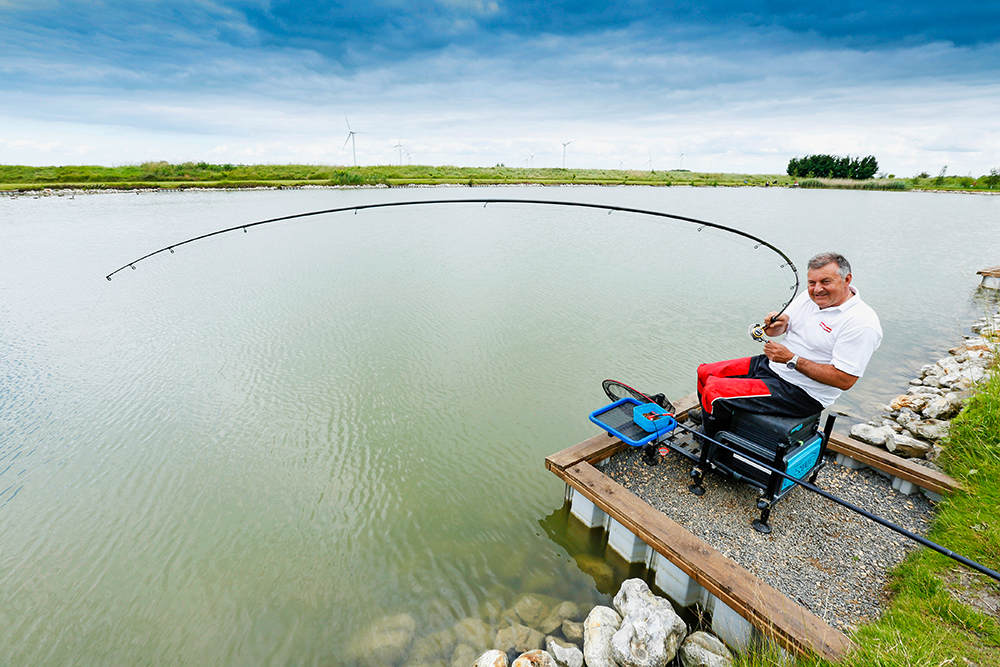
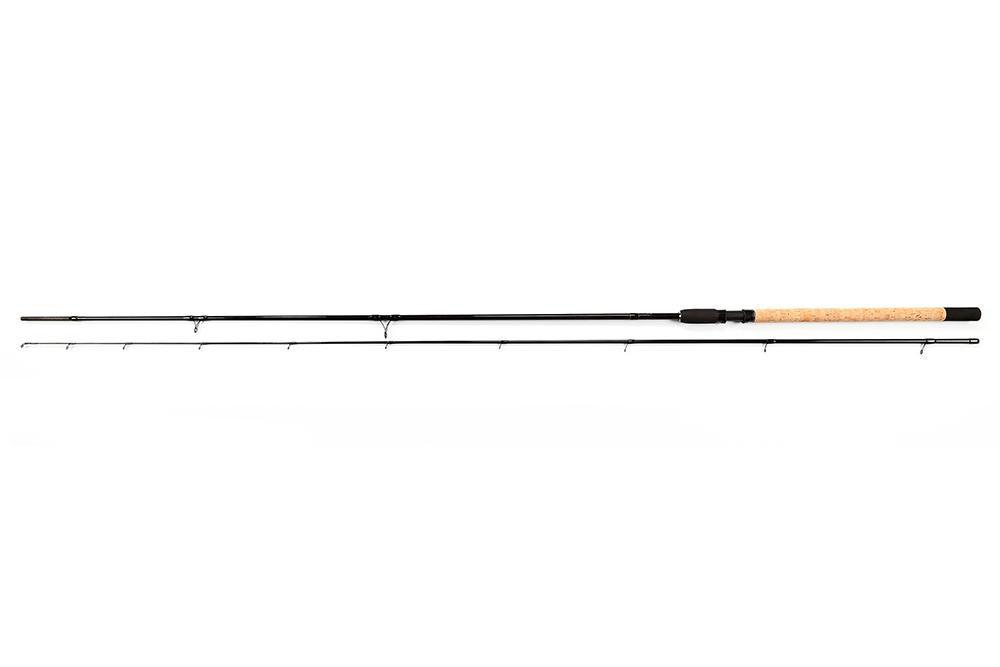
QUICK FIX
Top section: The top section of the rod has
a quick tip action with a fast recovery rate. This allows you to make longer and smoother casts.
Fittings: High-quality line guides are used throughout, producing super-slick casts no matter how great the diameter of your line.
Blanks: Made from ultra-slim high-modulus carbon blanks, they have two equal lengths so that they are ideal for carrying ready made up.
Action: The rods have a perfect parabolic non-locking action which is ideally suited to commercial fishery carp of any size.
Handle: The new Commercial King2 rods
are designed with shorter cork handles so that they can be more easily manoeuvred around the angler’s body.
PAY AROUND
£69.95
Browning has revamped its range of Commercial King rods.
The latest models retain many of the build characteristics of the originals – slim carbon blanks, two equal-length sections and a responsive, progressive action.
However, Browning has further refined its best-selling UK range with improved cosmetics, beefed-up casting prowess and a tweak to provide a little more power through the mid-sections.
All this has been accomplished without Browning significantly hiking up its prices, which something to be applauded.
So, with the summer sun in full water-warming mode and carp cruising about all over the surface of nearly every lake I have visited in the past two weeks, it made perfect sense to take a closer look at Browning’s latest Commercial King2 Pellet Waggler rods.
These 11-footers come in Medium and Power versions, the latter boasting around 15 per cent more stiffness and power for situations involving bigger fish, or casting heavier floats up to 30g.
My chosen test venue, The Pool at Fields End Fishery in Cambridgeshire, is noted for its mixed stocks, so I chose the Medium model with a maximum casting weight of 20g. This is ideally suited to lighter floats, hooks and lines.
Assembling the rod, it’s immediately apparent that this is quality kit. At only 175g, it’s nicely balanced, with a super-quick tip action and fast recovery. That means it doesn’t wobble around much, making long, smooth casts easy to achieve.
My float choice was the small flighted John Bonney model that comes free on the front of Angling Times this week. It flew across the Pool to a range of 25m with no effort. The slightly reduced handle length made feeding with a catapult equally effortless, and that made very short shrift of what can otherwise be a rather tiresome ‘feed and cast’ routine.
Feeding little more than half-a-dozen 6mm pellets every 20 seconds or so, it wasn’t long before dark shapes were coming in to feed as soon as the pellets hit the water. But, as often happens on a well-fished venue, as soon as the float splashed down, they high-tailed it out of the swim.
The answer to this fishy conundrum is to feed twice, immediately before and after casting. You will also need to feather the line, so that the float lands with a gentle kiss on the surface. Get it right, bites will be savage. You now need to get them out of the killing zone as quickly and quietly as possible, by keeping the rod low, simultaneously reeling and pulling back.
For this you need full confidence in your rod, and reel for that matter, keeping the fish moving without pulling the hook, breaking the line or having the fish charge back through the feeding shoal. Basically you are pushing your kit to it limits, and it needs to respond and perform in equal measure.
This latest Commercial King2 Medium Pellet Waggler rod does exactly that. The added bit of muscle Browning has added kicks in as the blank approaches full parabolic compression, but its non-locking action provides enough of a safety factor for you to be able to dish it out without fearing the worst.
I was also impressed with the rod’s ability to deal with fish other than carp. During the live test some pretty hefty ide decided to have a go. These are not exactly cage fighters, but can be welcome weight builders in matches.
Their lolloping ‘fall-over’ swimming action means they are effectively dragged towards the net – hook-pulls happen all too often when using carp-style pellet waggler tactics. But not with this rod. It handled everything from near-double-figure carp, through to heavyweight ide and big roach, with aristocratic disdain.
VERDICT
I really liked the original Browning Commercial King rods, rating them right up there with many of the best models then available.
These latest rods look, feel and perform with every bit as much style, but with a little more bite.
Improvements to the cosmetics and furnishings give them an expensive top-end look which belies their very sensible price tags.
Mark Sawyer
Colmic Scrape Xtreme Next Adventure 35g Feeder rod
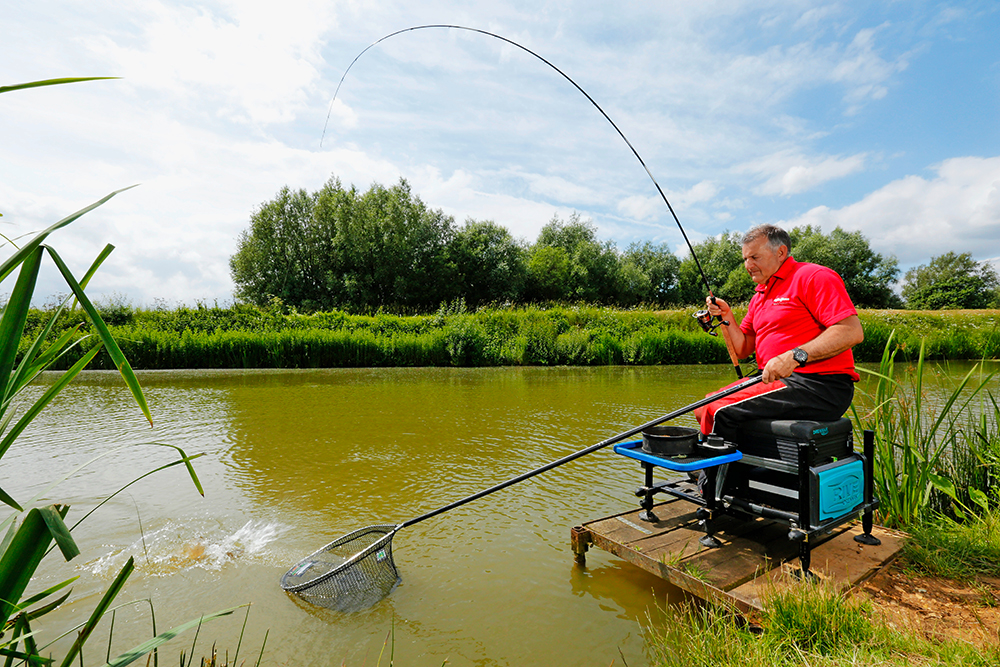
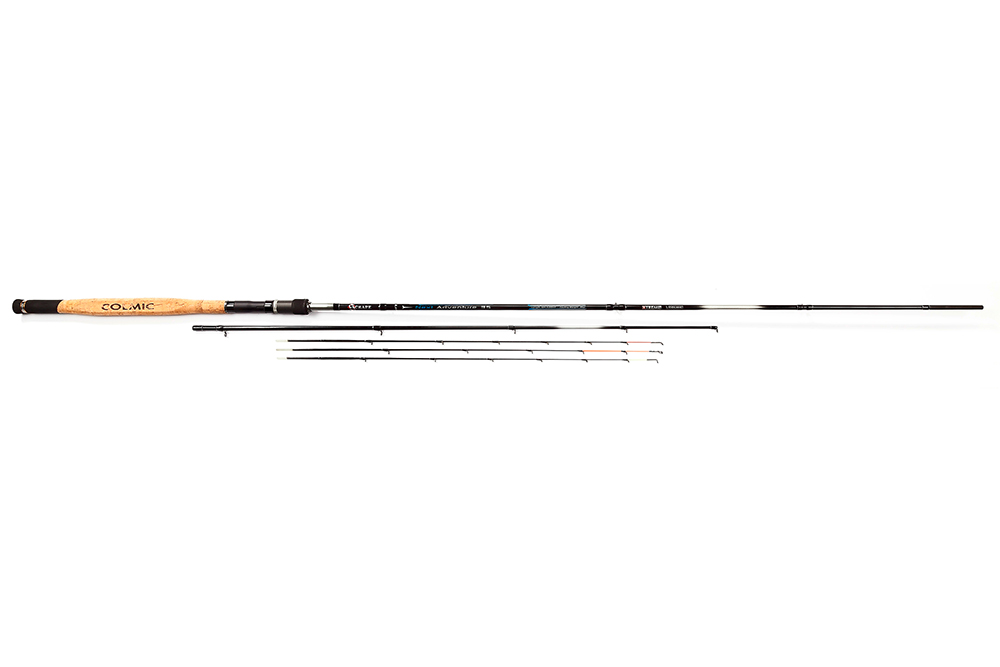
PAY AROUND
£77.99
Italian brand Colmic has been around the UK match scene for many years, with products such as Colmic Jolly pole floats..
Its nickelled Nuclear 501 pattern is the forerunner to many commercial carp hook designs, and it’s fair to say that Colmic poles – and rods, for that matter – have proved very popular.
It’s always going to be tricky for a European company to gain a really strong foothold, though – think Trabucco and Tubertini.
However, at this year’s Big One show Colmic revealed several very impressive new poles, seatboxes and rods for commercial fisheries.
One of the outstanding new rod concepts at the show was Colmic’s three-rod 9ft 25g, 10ft 35g and 11ft 45g Scrape Feeder Xtreme Next Adventure series. All three of the two-piece blanks have a typical fast parabolic action, marrying a forgiving tip section to a mid-section with plenty of backbone, allowing fish to be played quickly to the net without the risk of hook-pulls or snapped lines.
Colmic has built its three Adventure rods with a taper unique to each in respect of casting distance and feeder weight. The shorter the rod, the faster the taper – the longer the rod, the stronger its lever, which translates into casting power and ability to bring fish quickly to the net. All three models are said to be ideal for use with cage, pellet, Method and block-end feeders, as well as straight lead tactics.
The model on live test duty, the mid-range 10ft 35g rod, should be well suited to most short to mid-distance feeder work on a normal commercial fishery.
The proving ground for the theory was Decoy’s fish-packed Lou’s lake, a horseshoe-shaped water that responds particularly well to far-bank feeder tactics. Accurate casts of around 35m are needed to get the best from it.
Starting the session using a lightweight 15g flatbed Method feeder, the sporty Italian blank cast straight as a die time after time, and despite early reservations about its short and rather delicate looking quivertip carrier section, the silver-etched black blank really did produce an impressively fast parabolic action. Carp from 2lb-5lb were beaten in double-quick time.
The rod comes with three push-in fibreglass quivertips of 1/2oz, 1oz and 1.5oz, and the featherweight blank features two double-leg lined guides on its butt section, with another five single-leg lined guides perfectly placed along its carrier section to emphasise the fast taper action.
Suited to mainlines up to 8lb and hooklengths down to around 0.12mm, it’s lots of fun to use, mainly because it’s nigh impossible to lock up.
As an all-round commercial feeder rod it not only looks different from the norm, but it performs in a refreshingly different way from your average bog-standard commercial feeder rod… grazie Colmic!
VERDICT
Don’t let its name or dual colour scheme put you off – Colmic’s Scrape Xtreme Next Adventure 35g Feeder rod is quite something! Perfect for short to medium casting ranges, the blank lands substantially big fish in double-quick time, even on light gear.
If you visit a commercial fishery where the fish’s mouths are a bit messy and prone to hook-pulls, you should definitely have a look at this rod soon.
Shimano Beastmaster CX Commercial 9ft-11ft Float rod
The new Shimano Beastmaster CX rod range has been developed for small to medium-sized carp. Much modern match fishing takes place at 30 yards, so each CX Commercial blank has a parabolic fish-playing action that absorbs the power of the fight, preventing hook-pulls. There are Feeder and Float rod versions, ideal for all but the heaviest Method, straight lead and pellet waggler tactics.
PAY AROUND
£109.99
Hooray – at long last it looks like summer is on its way!
The daffs have bloomed, and on all the fisheries I have visited broods of downy ducklings swim in unison as if tied together.
As the water warms, carp are drawn inexorably towards the surface for some community sunbathing. So how can we tempt them into taking our baits?
Floating dog biscuits work, but they are banned on commercials so it’s down to pellet waggler, or wag and mag tactics.
Unless I have to cast miles, an 11ft two-piece float rod is usually my weapon of choice. Sometimes, though, especially when targeting F1s on snake lakes, casting tight up against islands or even dobbing, there’s definitely a case for an even shorter rod. Its added casting accuracy can pay dividends.
As if to second-guess me, Shimano has released a brilliant line-up of new Beastmaster CX Commercial rods, including this rather nifty 9ft/11ft model.
Not only will it cope with most commercial fishery float work, but the carbon blank includes a 27ins dolly-butt section that fits snugly into the cork and EVA handle, giving you a well-balanced 9ft rod.
In their shorter mode, dual length float rods can either be much too pokey, or limper than a Julian Clary handshake, leading to constant hook-pulls or protracted battles with fish on an under-powered blank. But after spending time with the new Beastmaster CX 9-11 I can happily report that this classy looking all-black blank offers a medium parabolic action, with an almost tippy casting performance, at both its 9ft and 11ft lengths. I’d guess that England Feeder international Rob Wootton and ex-Shimano consultant Mark Pollard had quite a bit of input into this rod’s development.
Despite its slim profile and lightweight Bio-fibre carbon build, the blank has more than enough beef to cope with the biggest of fish. It’s possibly better suited to casting floats from 4AAA upwards than it is small wagglers, and Shimano has given it a maximum casting weight of 15g, which gives it plenty of all-round scope.
VERDICT
This great new float rod from Shimano is aimed squarely at the match angler – well thought out, cleverly designed, with a build quality and furnishings normally only associated with top-end flagship models. The 9ft/11ft blank has the flexibility to be used on all types of commercials with reel lines and hooklengths of 4lb-8lb.
Mark Sawyer
Shakespeare Superteam Match 13ft rod
TECH SPEC
Length: 13ft
Power rating: 6lb
Pieces: 3
Handle: Cork/EVA
Rings: Zirconium
Extras: Side keeper ring
PAY AROUND
£89.99
You could do worse than use the Redditch tackle giant’s products down the years as a means of charting the development of the modern match fishing rod in terms of materials, furnishings and specifications.
A potted history of Shakespeare notables would show the fibreglass Match International as a rod ahead of its time. This was followed by the excellent, if rather expensive, President which I believe was the first carbon fibre rod to be built with a spliced-in tip.
Then we had the superb Mach 2 Boron which held centre stage with matchmen for many seasons, but was eventually superceded by the Mach 3 carbon. Since then we have been blessed with the firm’s high-modulus carbon Superteam model, launched in 2014.
Shakespeare did, of course, introduce many other match rods but those listed above were widely recognised as being as good as it got back in the day. Remember, it wasn’t all that long ago that match fishing was all about using a waggler or stick float to catch winning nets of roach, chub, dace, perch or bream, the tool of choice being a 13ft, three-piece.
The finesse to deftly flick a small waggler across a canal, cleanly pick up line from the surface when long trotting and cast bodied wagglers or sliders into deeper water on rivers and lakes, are qualities we expect of any good match rod.
That brings me nicely on to Shakespeare’s Superteam 13ft match rod which really is a jack of all trades and will take all these tasks in its stride. Yes, this rod was first introduced a few years back, but that doesn’t make it in the least bit tired or dated. It remains to this day one of the best all-round match-style float rods that few others can hold a candle to.
The three-piece pencil slim carbon blank is nice and light in the hand, making it easy to hold for long spells, and a requirement of any good river rod. Worthy of note are its zirconium oxide guides that enable almost friction-free line travel, very useful when trotting a river at the pace of its current.
Its fast, progressive action doesn’t lock up under stress, so when you hook into a really big fish the blank will absorb and keep absorbing its runs and lunges with no fear of the line snapping. At the same time it has the backbone to boss fish away from snags.
Live testing the rod was interesting, as I already had some idea about the Superteam’s performance from an earlier Angling Times review. This time, rather than take it to a carp puddle or river, I thought I would test the blank’s sharpness and line pick-up qualities on a deep venue I knew held some big roach and decent ide.
Waggler tackle with small hooks and maggots, coupled with a nagging easterly side wind, wasn’t perhaps the ideal mix for a decent day’s fishing. But I needn’t have worried – Shakespeare’s finest 13ft of carbon cast a hefty three-swan insert waggler with ease and unerring accuracy.
With the float set at 12ft deep, line pick-up speed was central to hitting bites and the rod didn’t disappoint, connecting time and time again with the most tentative of enquiries.
As the fish responded to the feed they started coming up in the water, and bites became lightning-fast.
Now the line needed to be whipped from the surface at a rate of knots, and yet again the rod performed impeccably. Not merely a jack of all trades but a master of them all.
VERDICT
Another pure class floatfishing rod from the Shakespeare stable and perfect for silverfish, the Superteam 13ft is tactically flexible and ultra-reliable. Use it with confidence, however light the terminal tackle. Its anti-locking nature and progressive action allows it to cope with sizeable fish, something that cannot be said of many old-school float rods.
Middy Baggin’ Machine Synaptic Duo rod
TECH SPEC
Two tops: Waggler and Feeder
Features: F-Lined Guides, hook retainer, two spare quivertips, Synaptic carbon design, ergonomic reel seat.
Casting weights: 2g to 25g Wagglers; 10g to 45g Feeders.
PAY AROUND
£109.99
This Middy Baggin’ Machine Synaptic float and feeder Duo is ideal for anglers on a budget who want a single rod to cover a multitude of different methods.
It has two separate top sections and comes with two push-in quivertips to make up a 10ft feeder rod that’s perfect for parrot cage commercial fishery pegs. With the feeder top, the rod is capable of fishing Method feeders up to 45g as well as cage and blockend feeders and straight leads. It has a soft progressive fish playing action, but with loads of power down the blank, and will handle reel lines up to 10lb with hooklinks up to 6lb. There’s also plenty of power to land double-figure carp, and the rod feels nicely balanced and responsive.
During a live test at the impressively stocked Lou’s Lake at Cambridgeshire’s Decoy Lakes, the rods mettle was well tested with plenty of F1s, as well as the odd larger carp. It cast a fully loaded Method feeder with impressive accuracy up to 30m with ease. The Synaptic blank is made from carbon and glass, which produces a very lightweight, fun-to-use tool, with an almost anti-locking action. Hook pulls are kept to the absolute minimum.
With the waggler top fitted, the rod is still 10ft in length, and will cast floats between 2g and 25g, making it ideal for up-in-the-water pellet waggler tactics. It can handle reellines up to 8lb and hooklinks up to 5lb.
The waggler section has a little more stiffness through its mid-section than the feeder top, but it still retains plenty of cushioning forgiveness, and is more than capable of absorbing last-minute lunges from even the largest of fish at the net, without risking hook pulls.
VERDICT
The Middy Synaptic Duo would make the perfect tool for the summer pleasure angler. Designed for use mainly on commercial carp fisheries, the rod is easy to transport and equally at home fishing a Method feeder or a pellet waggler.
Drennan Acolyte Feeder Plus 12ft rod
PAY AROUND
£189
Tackle giant Drennan has recently added two new models to its top-end Acolyte Feeder series. The latest 10ft and 12ft Plus rods are said to be the most powerful within the family, which includes 10ft, 11ft and 12ft Ultras with lighter actions, as well as an existing 11ft Plus rod.
The 12ft Plus model I tested is constructed using the same super-slim, two-section high modulus carbon blank featured on all Acolyte Feeders. But on this rod its mid to top section areas have been substantially beefed-up, to provide the blank with a higher weight loading point.
This not only aids its casting potential, enabling feeders and leads to be propelled greater distances, it also allows heavier weights up to 60g (2oz) to be used.
Drennan claims casts up to 60m are easily achievable, with even greater distances possible if you have good technique and, having live-tested the model on a large open water venue, I wouldn’t argue.
Other notable features are its stand-off SiC lined guides that help to keep the line well away from the blank, enabling the reel line to move quickly and smoothly through its guides, again to help distance. To that you can add a high-quality original Fuji screw down reel seat, full length 23ins-plus cork handle, and three push-in carbon quivertips, which have been selected to blend in with the rod’s parabolic fish-playing action.
So when, where and how would you use this rod? It’s certainly well suited for large expanses of open water – including rivers – and for all species of big fish.
The blank’s extra backbone provides plenty of casting clout which makes it ideal for all types of feeder and straight-lead tactics, just as I experienced at Lincolnshire’s big-fish mecca Bain Valley at Tattershall Thorpe.
The fishery’s windswept and open Halifax Lake holds some very big carp, which are noted for their fighting qualities. During the warmer months when the water is coloured, these can be caught on a pole in the margins, but once the colour starts to fade away, so do the fish. And like so many big waters in clear conditions, fish tend to shoal up towards the middle of the lake, a good 70m from the bank, more than a decent cast for any type of feeder rod, let alone one with such a slim profile as the Acolyte Plus.
Bread is the key bait, as it is on so many carp lakes in the cold. But Bain Valley is deep, so the punched disks need popping-up some three feet off the bottom to find the fish.
The longer hooklength adds yet another degree of difficulty to the cast. However, a decent sized bomb soon sorted this problem out. I did feel, though, that using an ounce-and-a-half of lead at around 65m-plus, the blank was on the upper limit of its capacities. To be fair, it was a very long chuck, and the Acolyte’s tip recovery post-cast, and its responsiveness, were never found to be wanting.
The rod’s push-in quivertips are faultlessly matched to its carrier section, with the 2.5oz, 3oz, and 4oz carbon quivers ideally suited for Method feeders and all hair-rig tactics.
Once a fish is hooked the blank’s action is surprisingly robust, and enables you to pull very hard without it ever feeling as though it might fold when under pressure – perfect for all big fish, not just carp.
The 12ft length enables a quick contact to be made with fish hooked at distance, and nothing that I caught while live testing, ever felt like it could dominate proceedings, which again for such a light and slim rod is very impressive.
I wouldn’t use it with small hooks and light lines, as I feel it had a little too much stiffness toward the end of the carrier section for gossamer gear, but as it wasn’t designed for that anyway, it’s hardly a criticism. I am, though, surprised that Drennan hadn’t moved the butt guide further down the blank, even if it meant losing a guide further up (think carp rod) as this may have added even more casting prowess.
VERDICT
Another sure-fire winner from Drennan. The Acolyte Plus feeder would be every bit at home on Boddington Reservoir as on the banks of the Severn or Trent. Thanks to its same-length design, and top ‘n’ tail retaining bands it is easily transported ready made-up, and is sure to be popular with long-range feeder fishing fans.
Mark Sawyer

